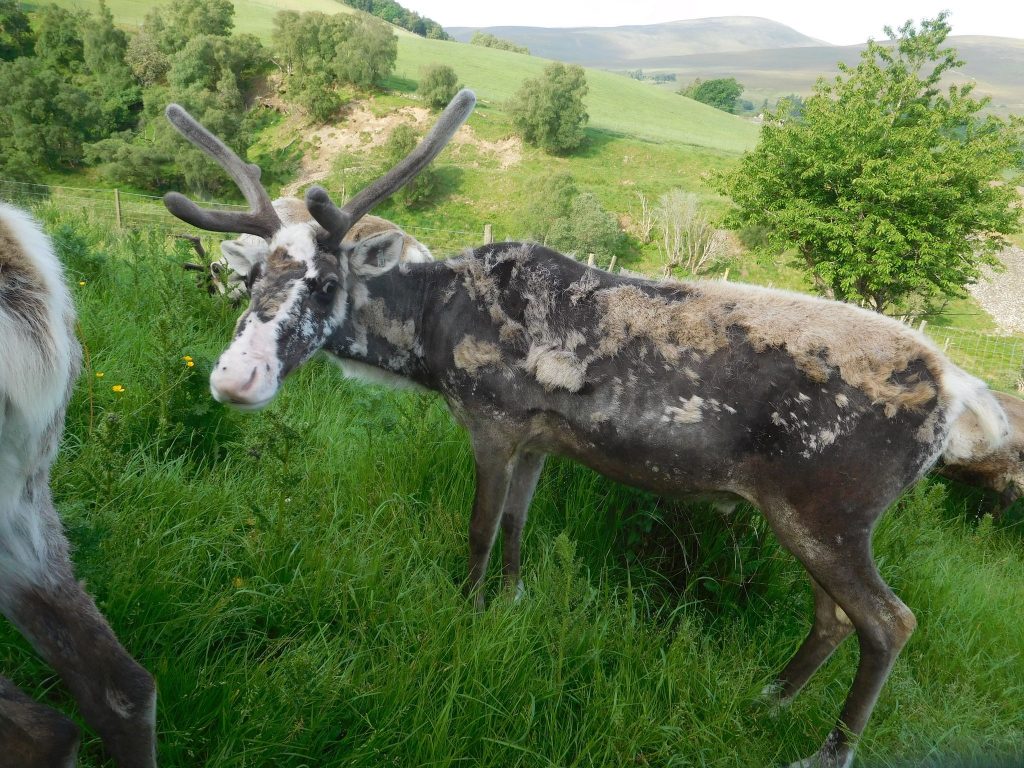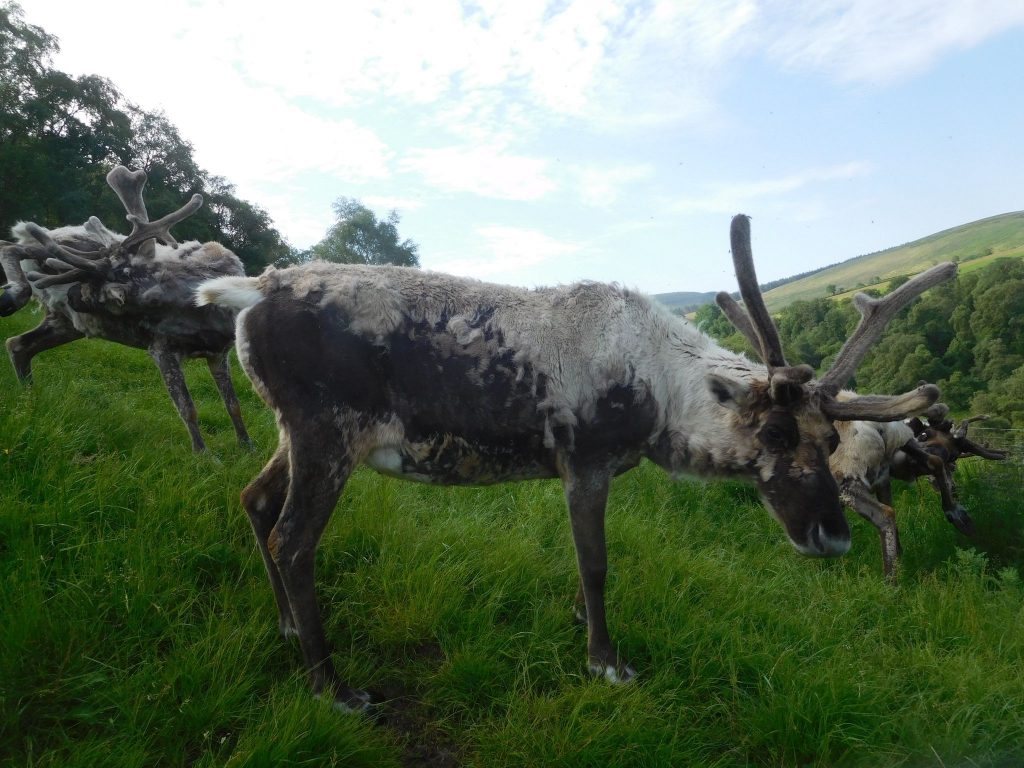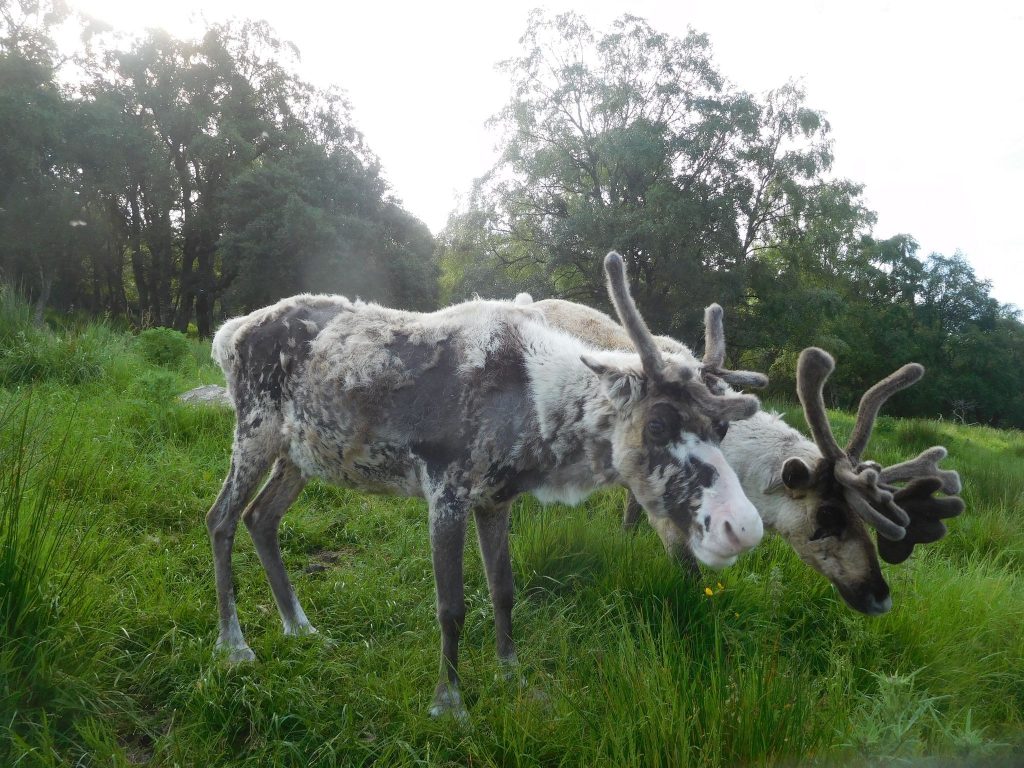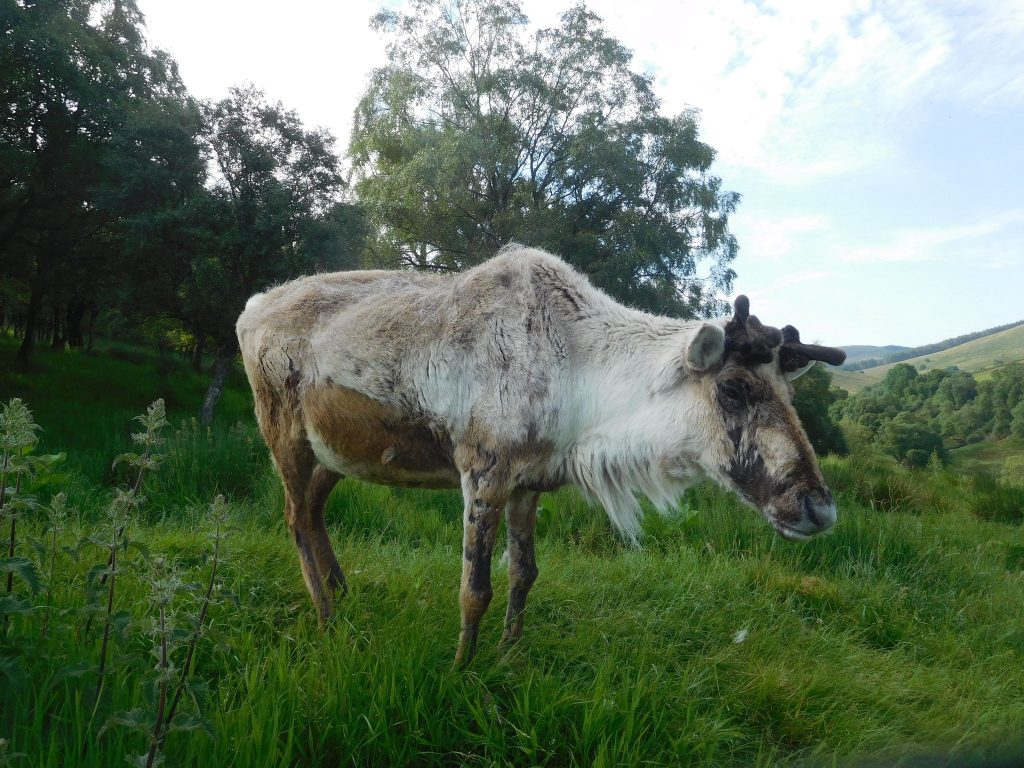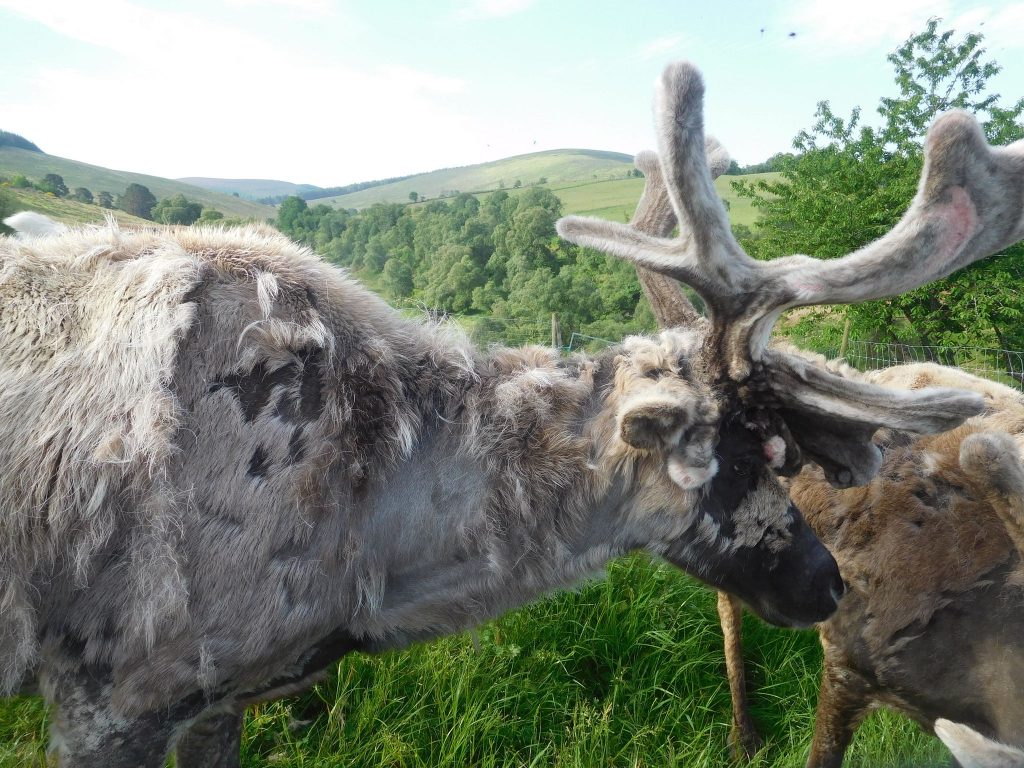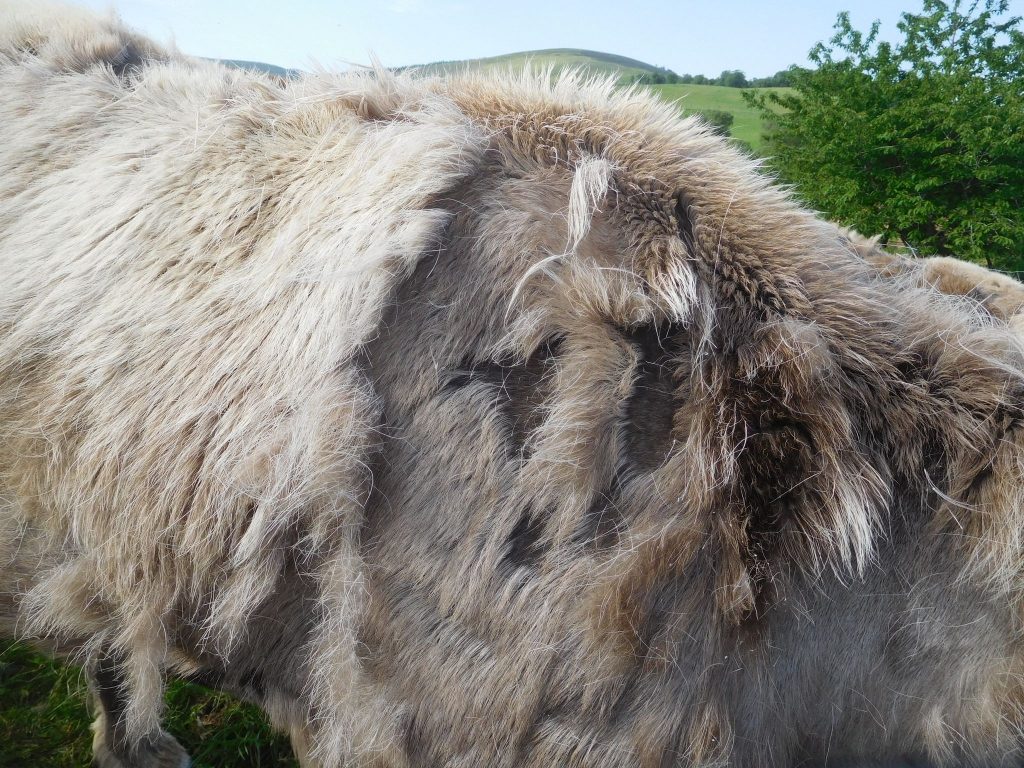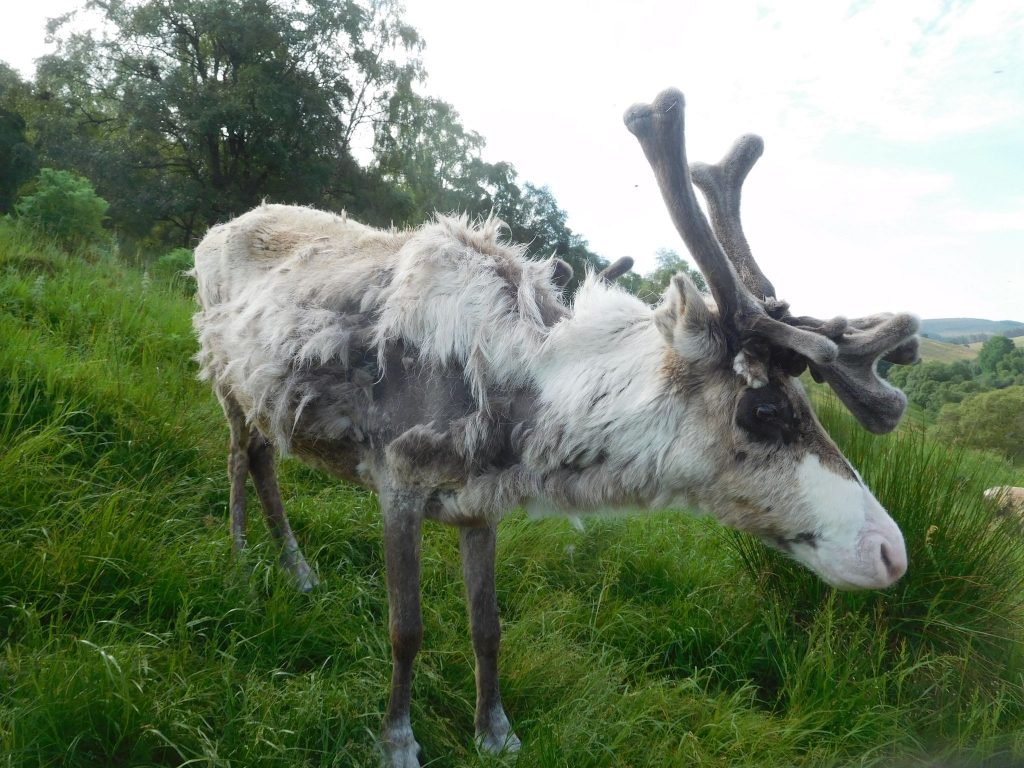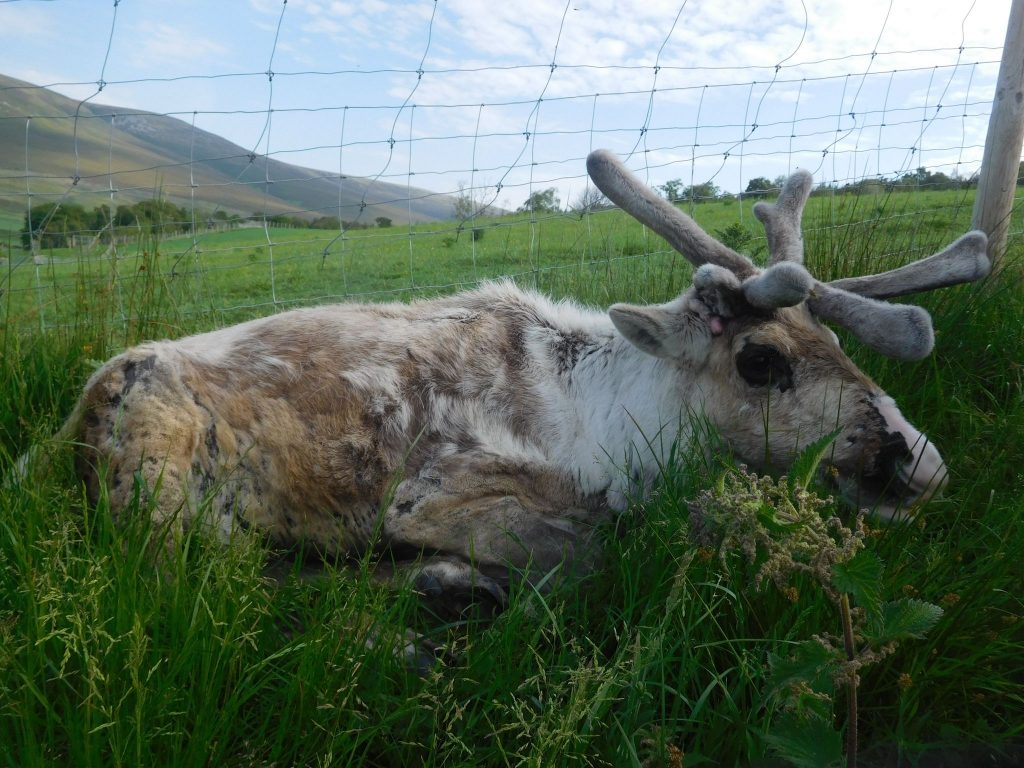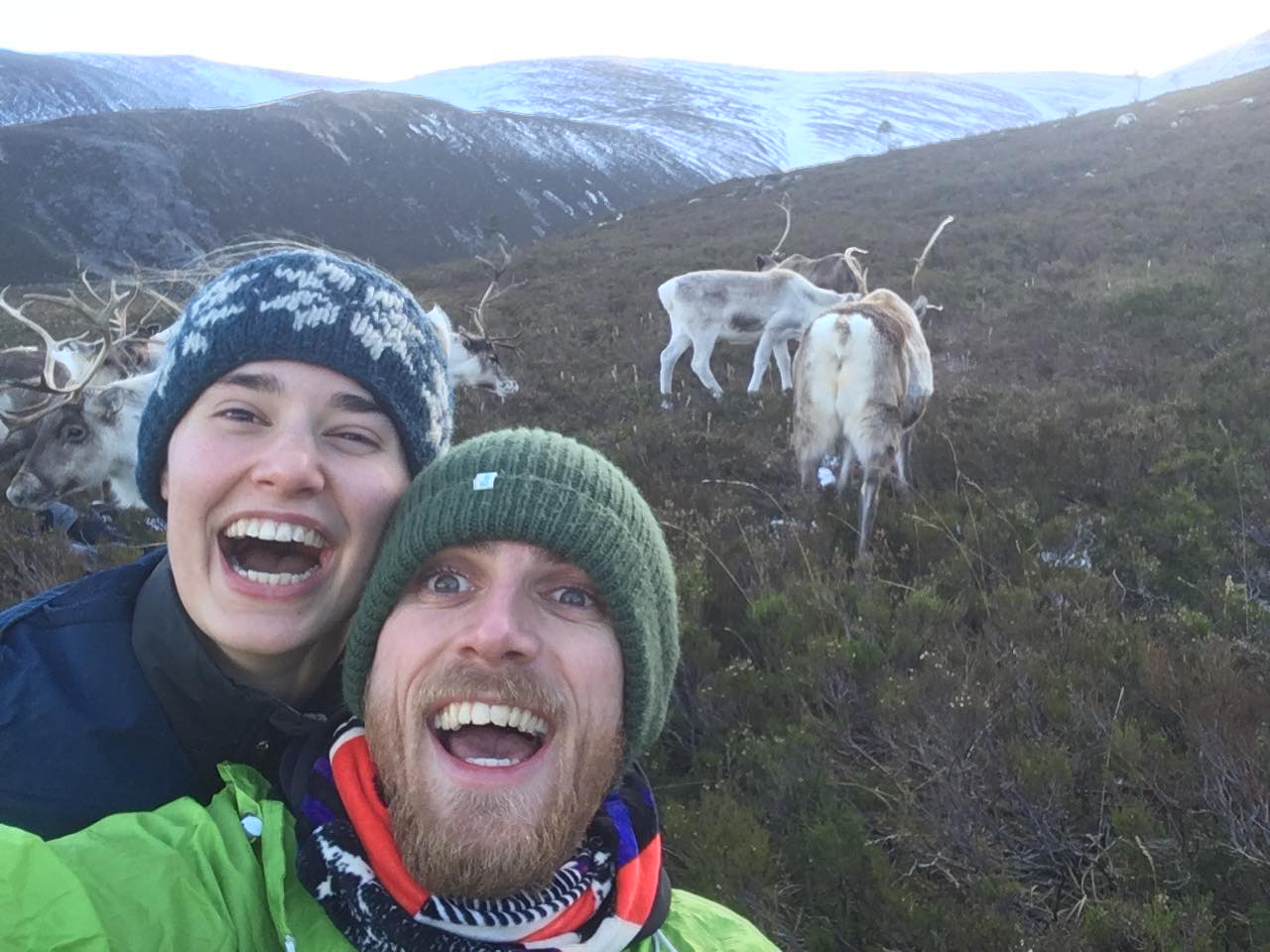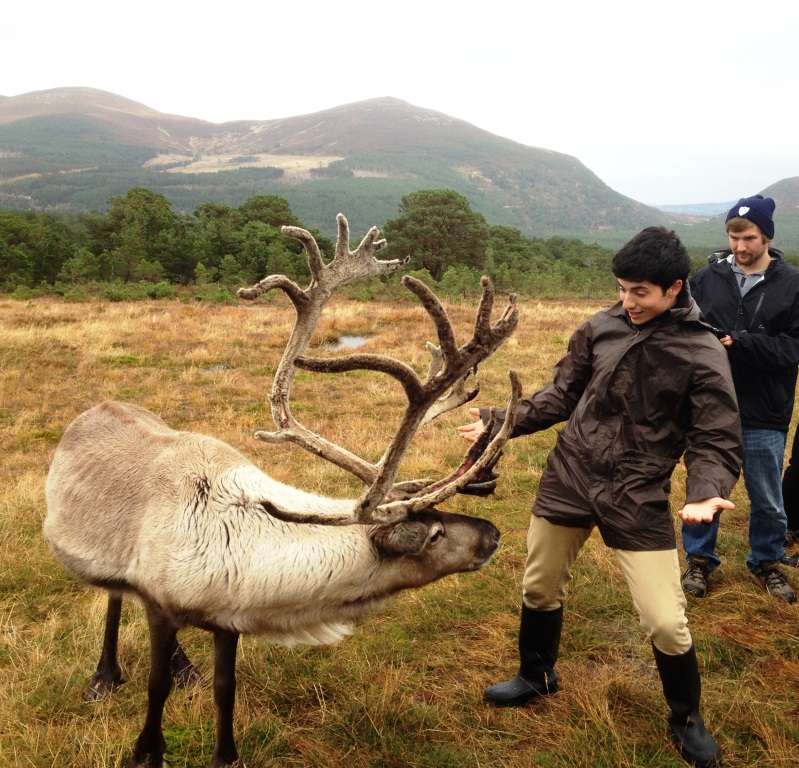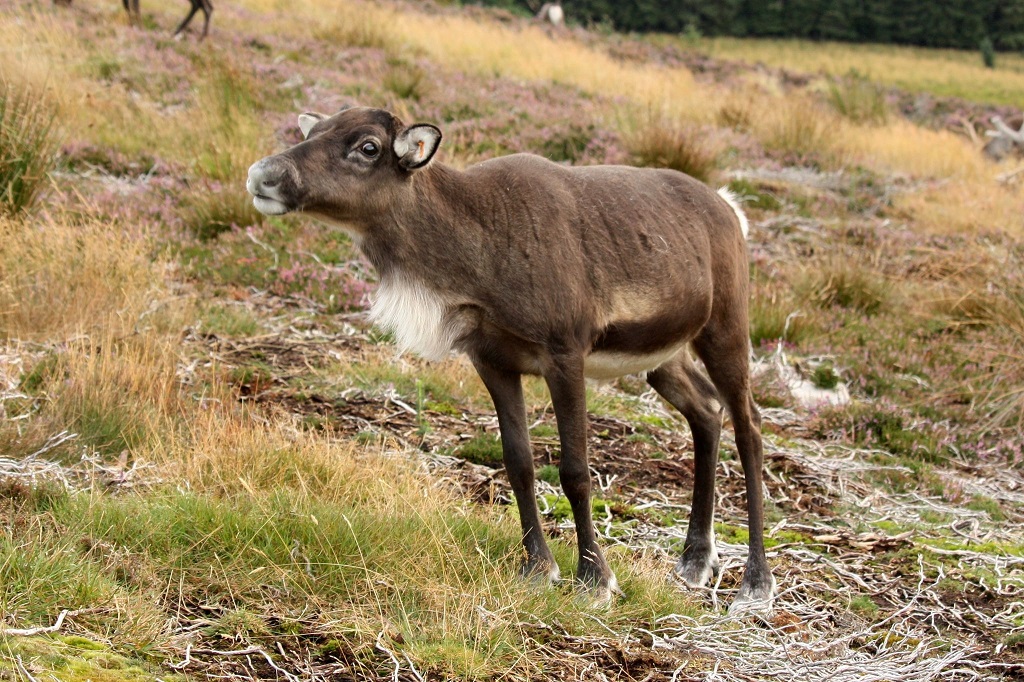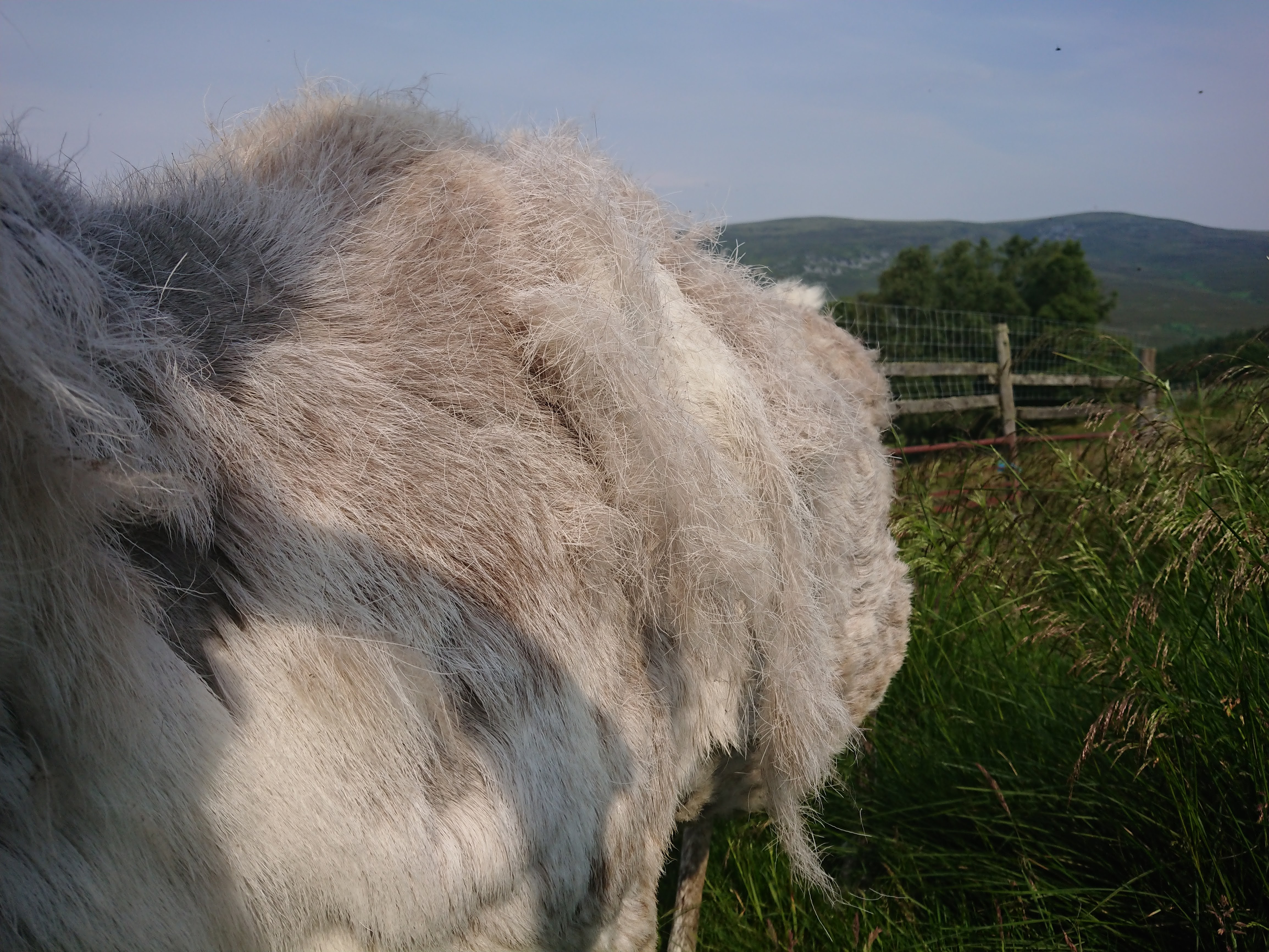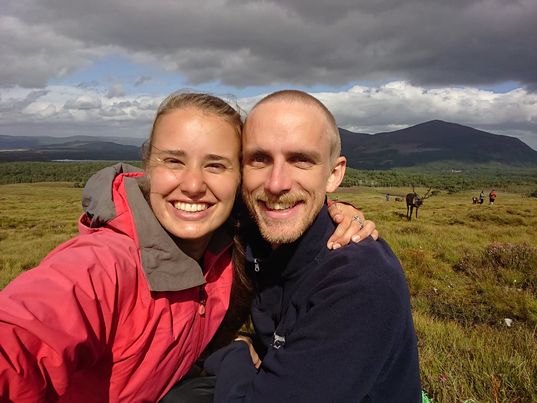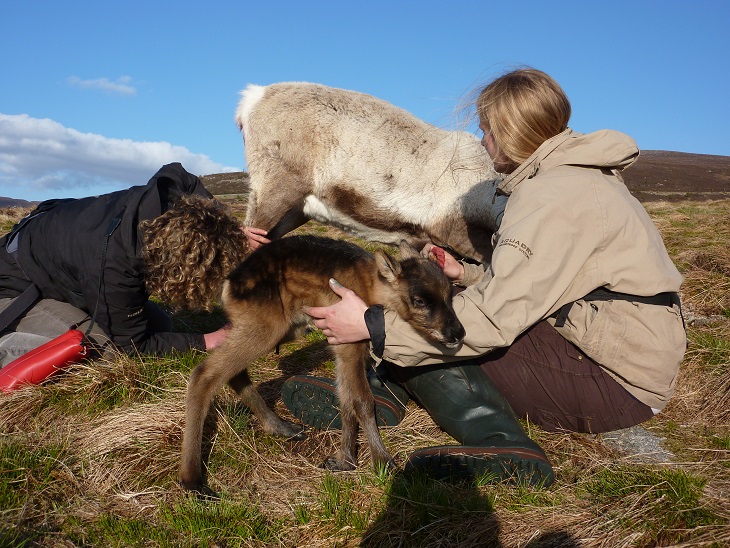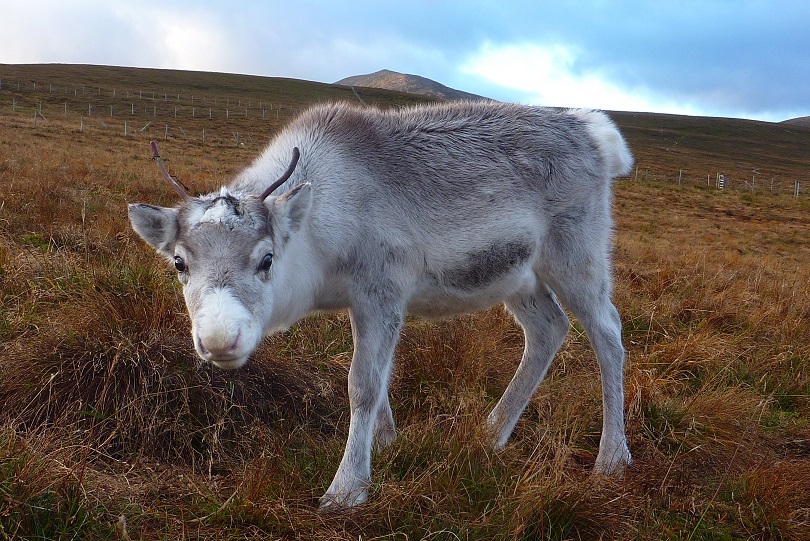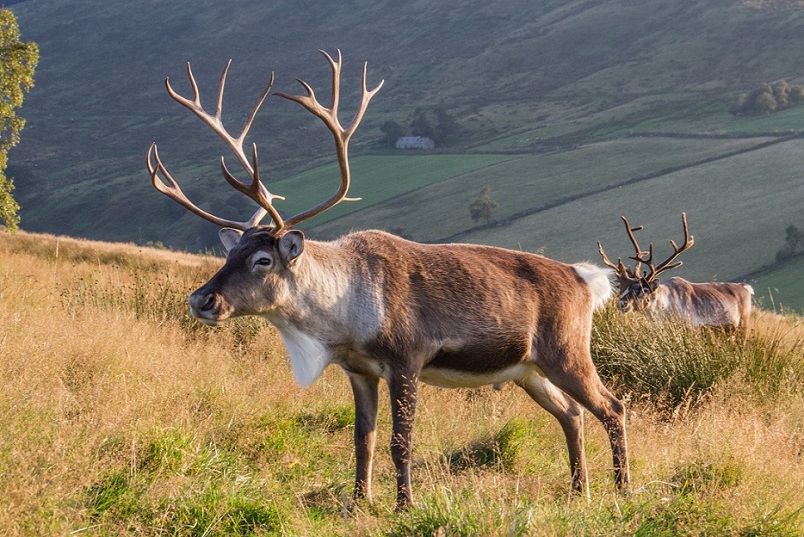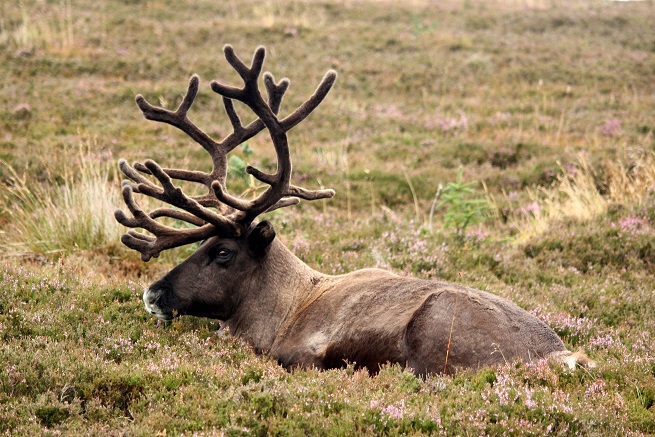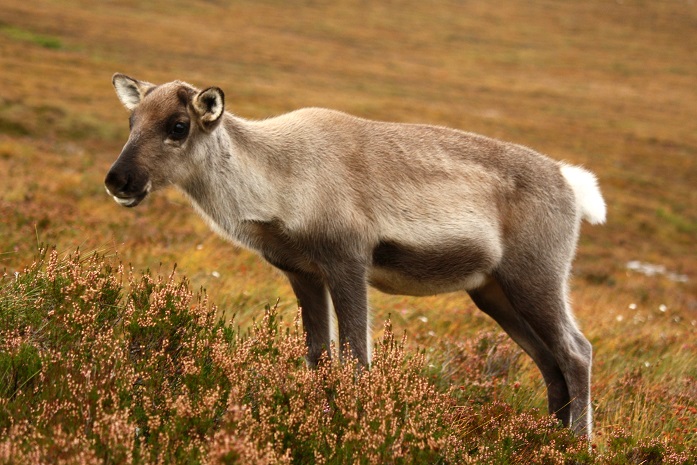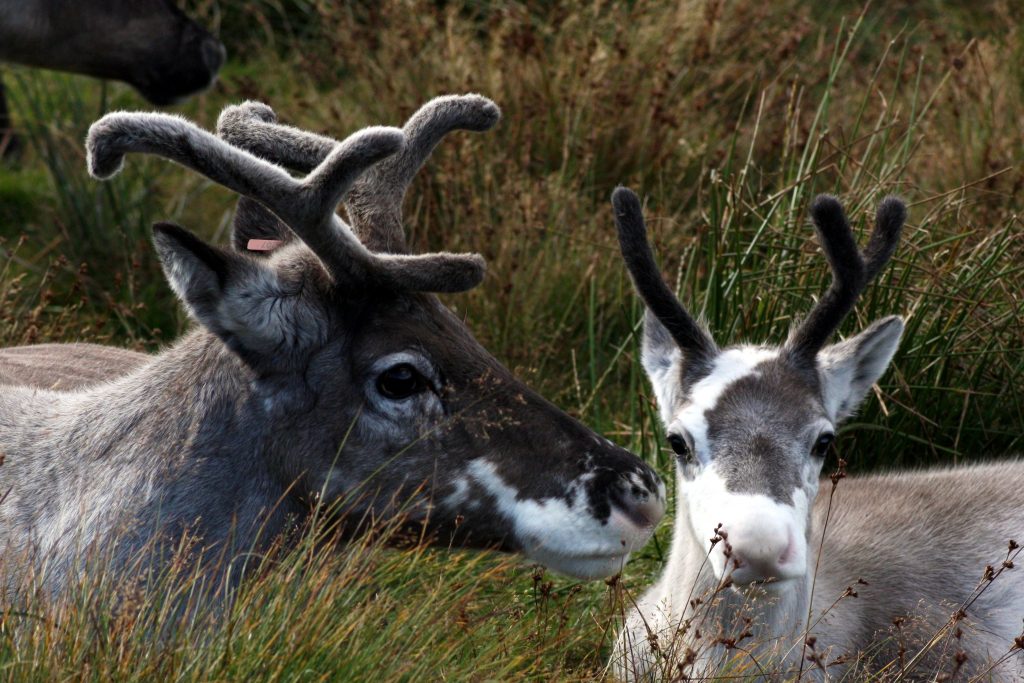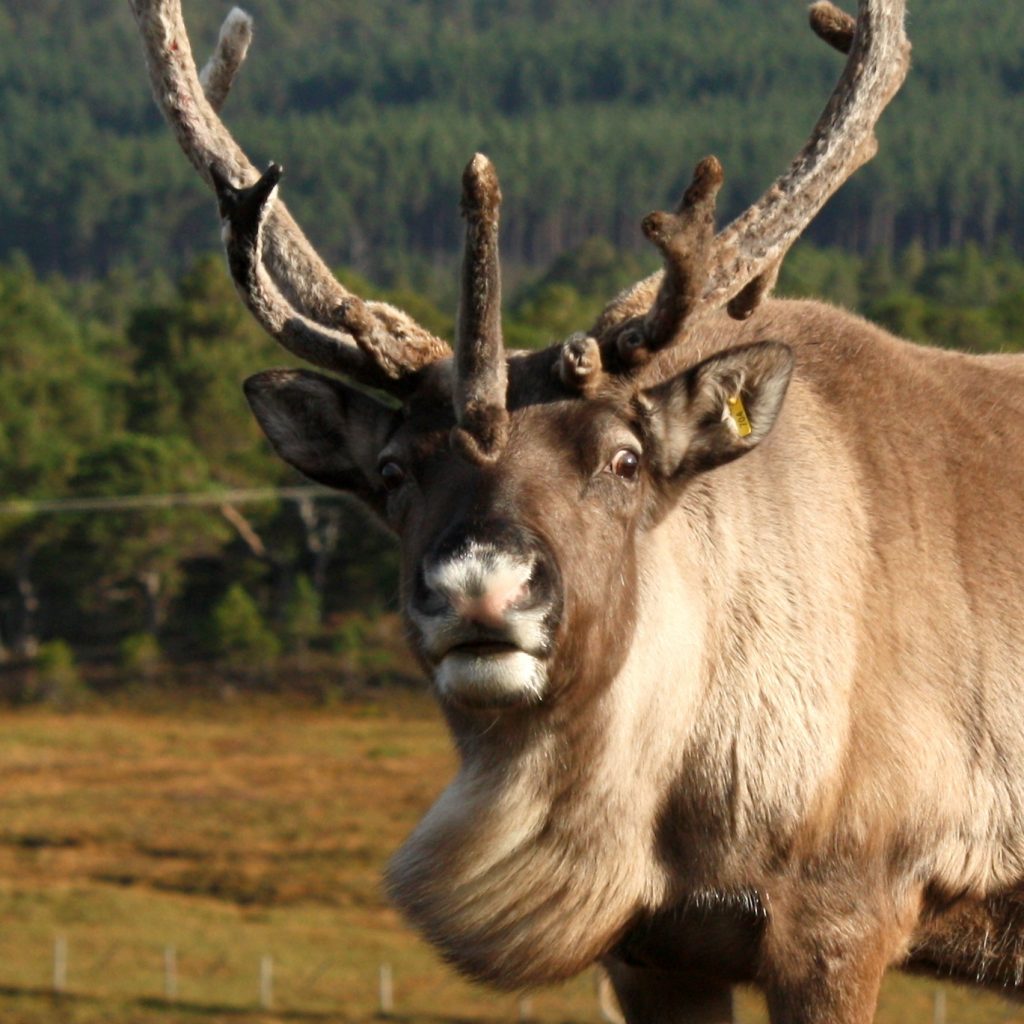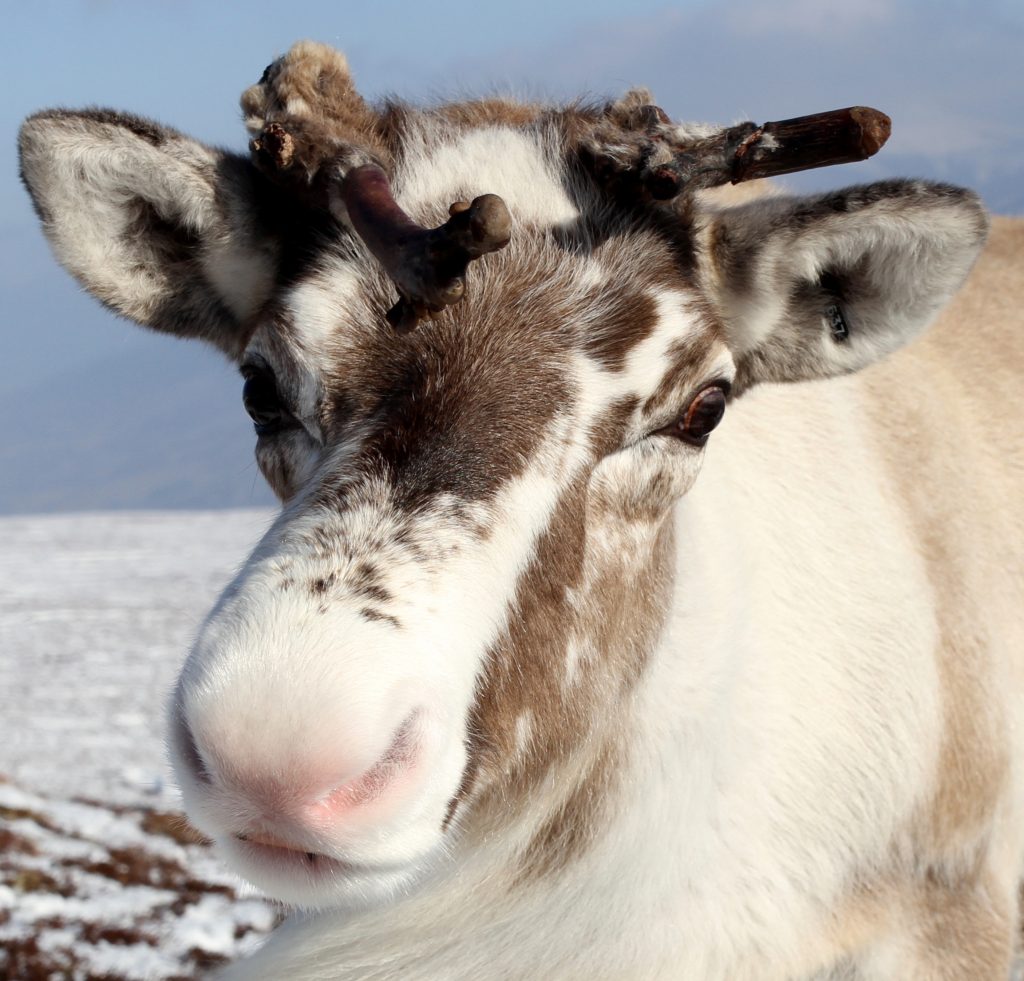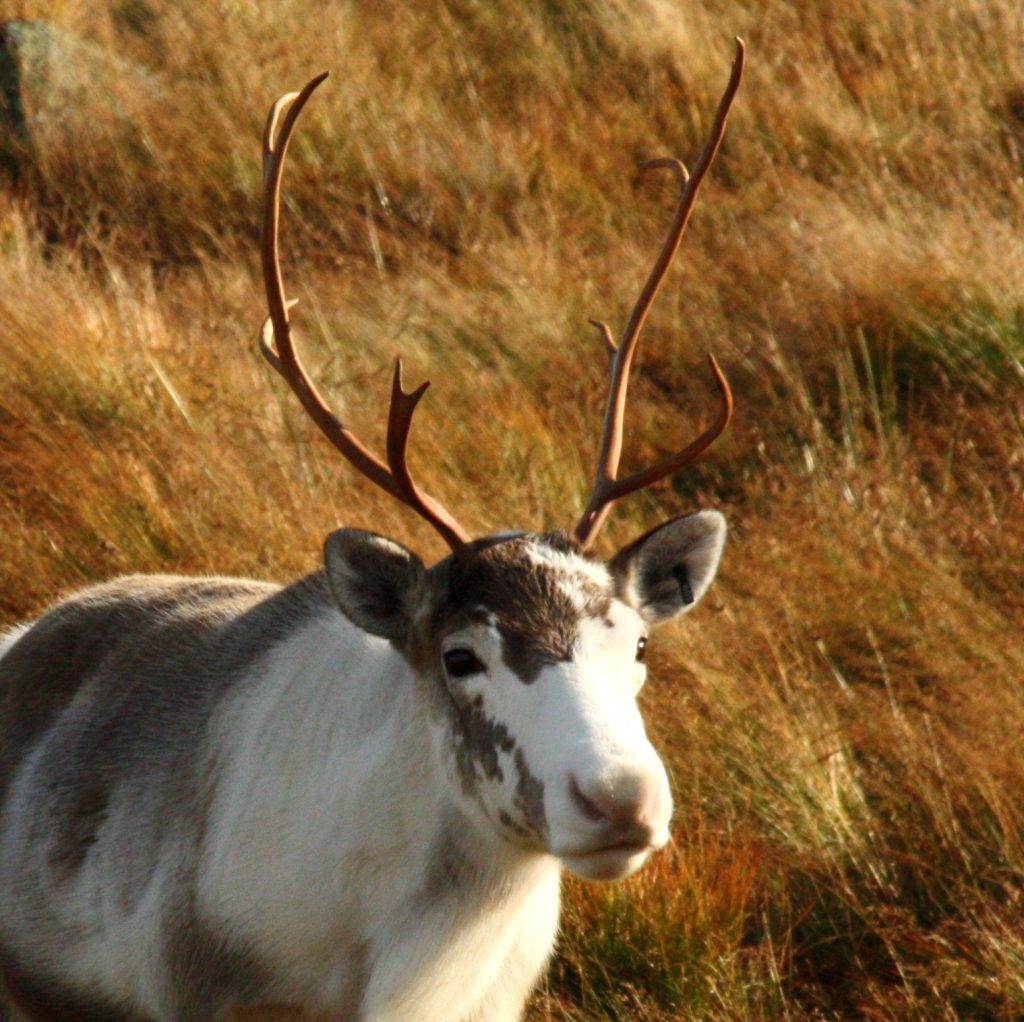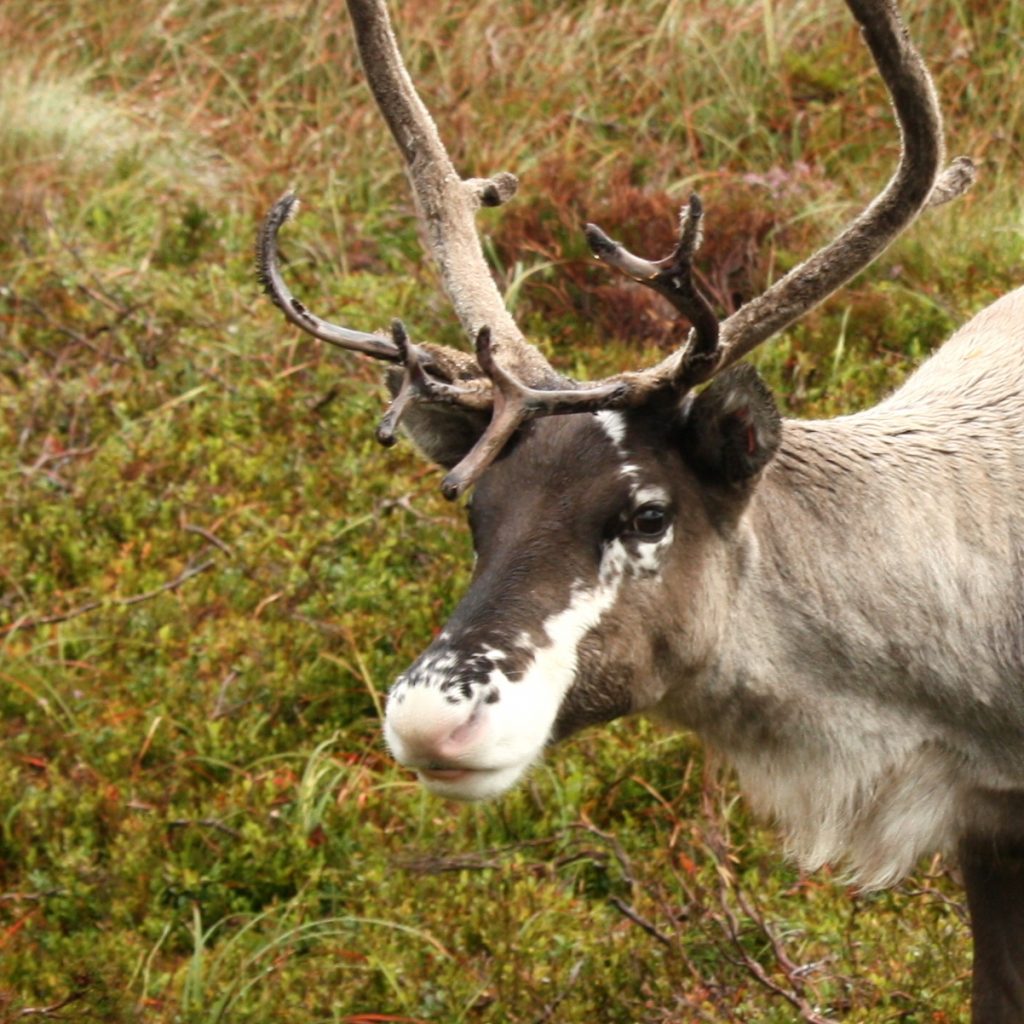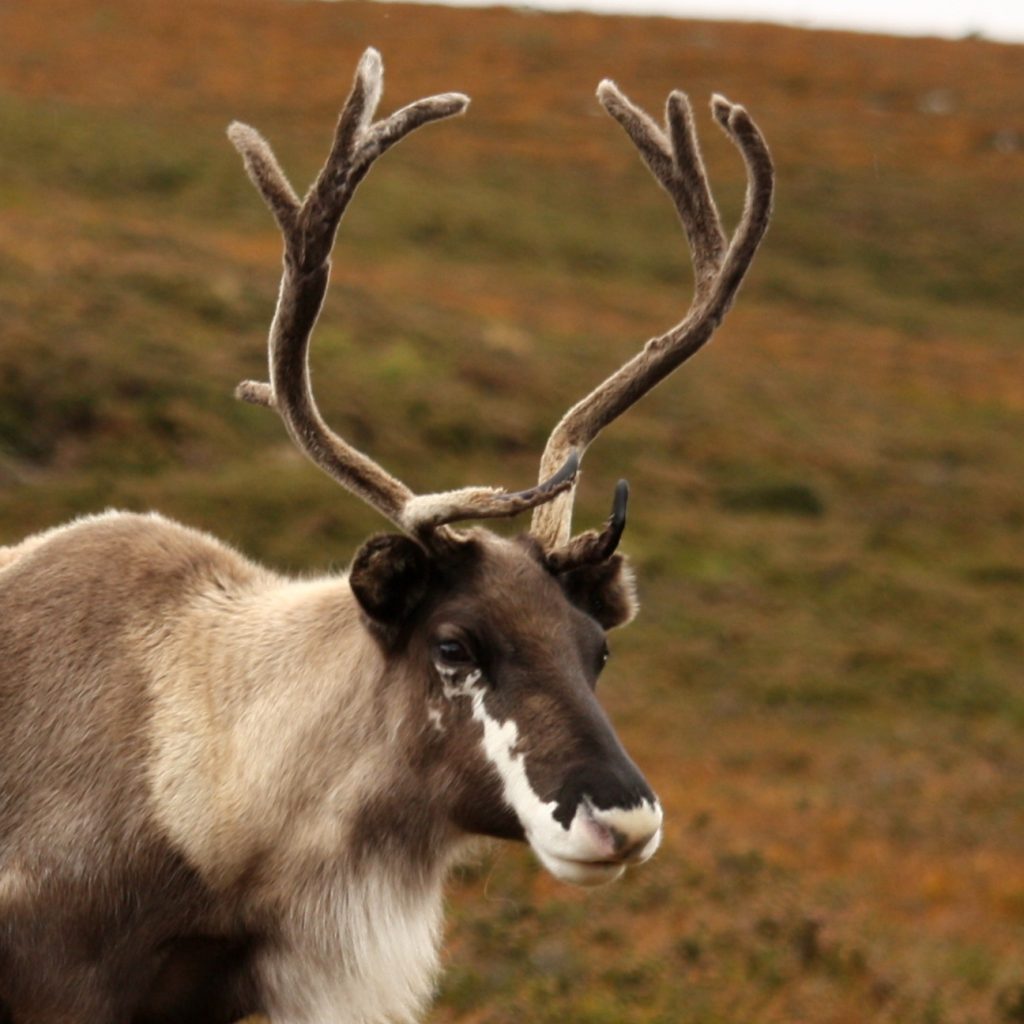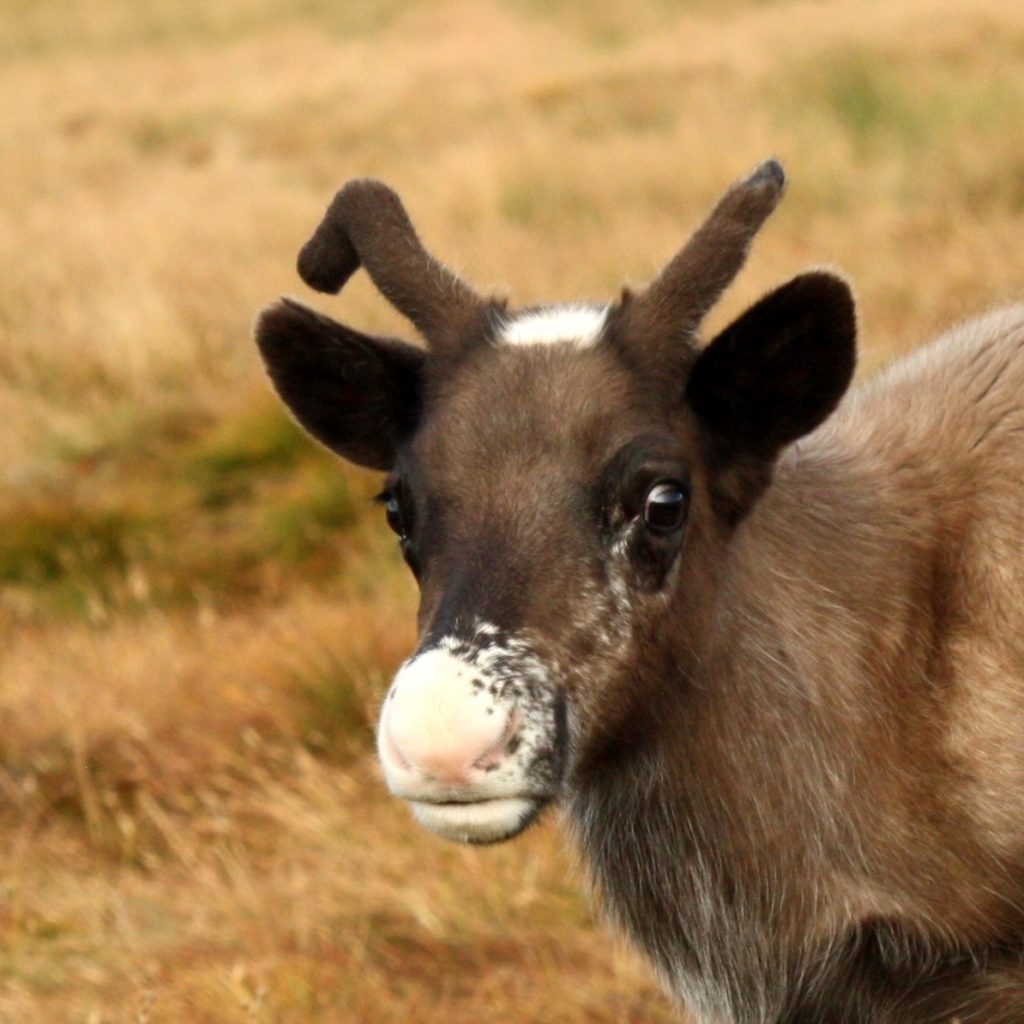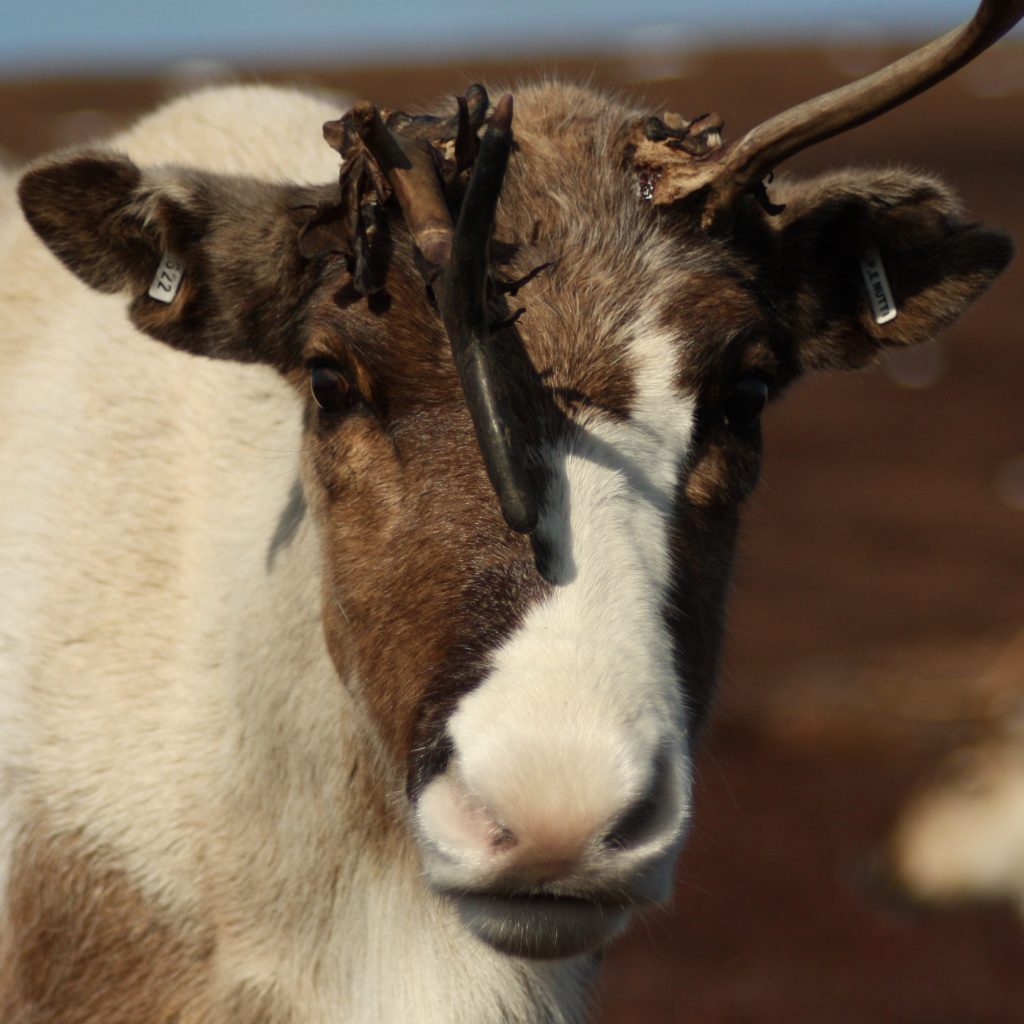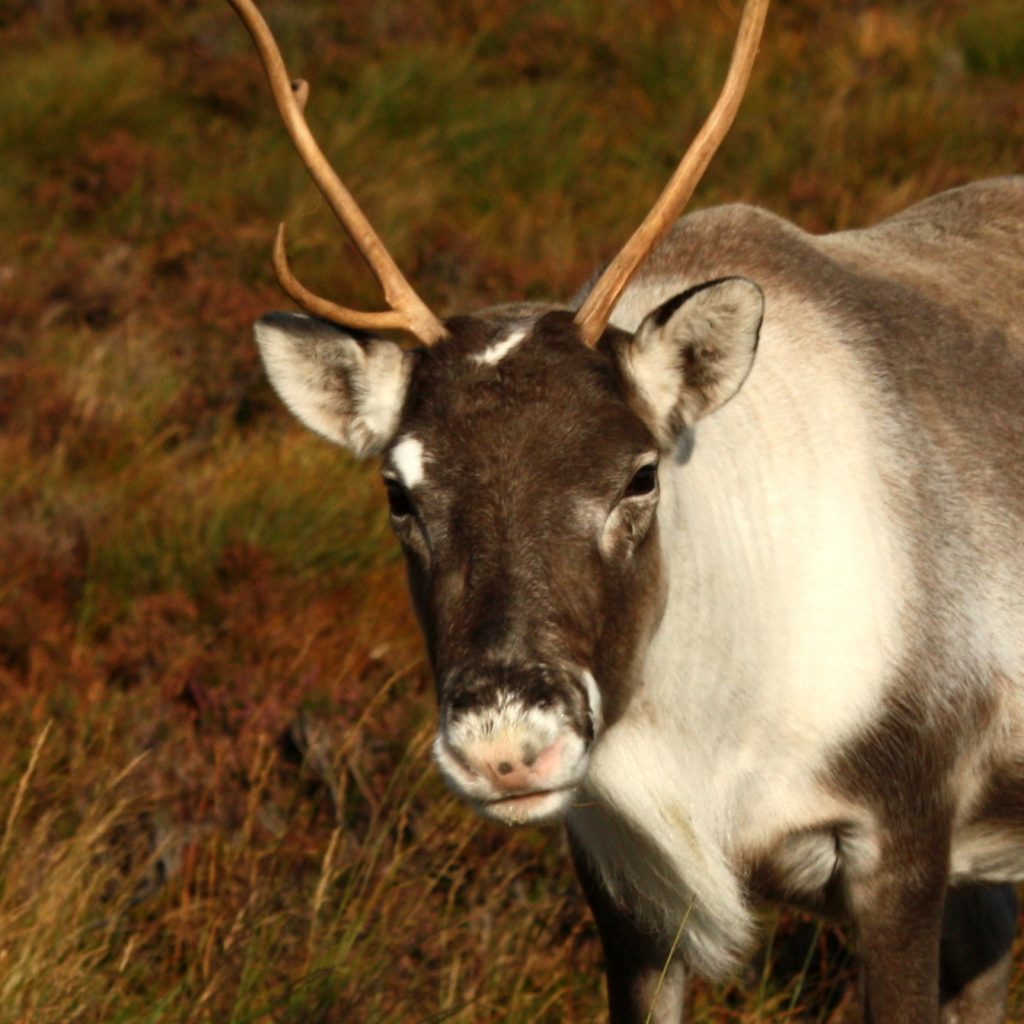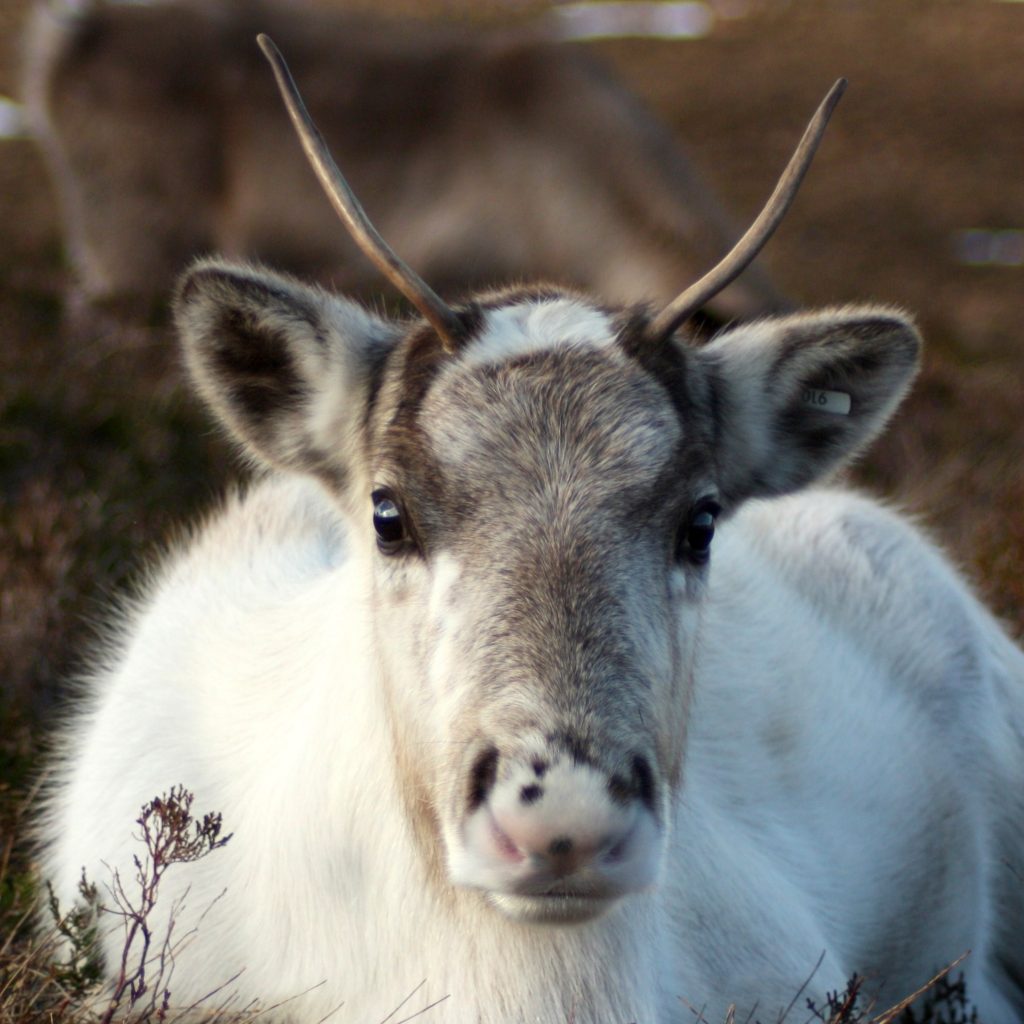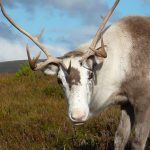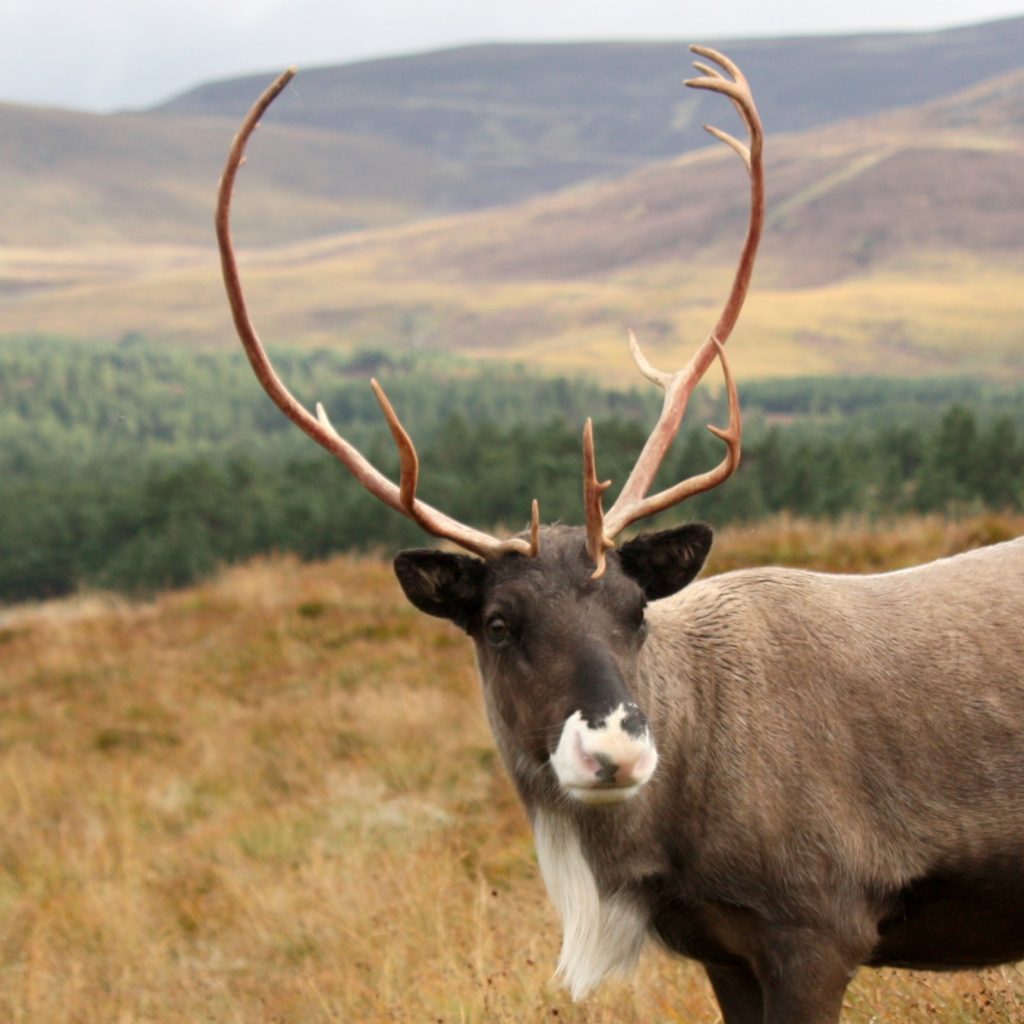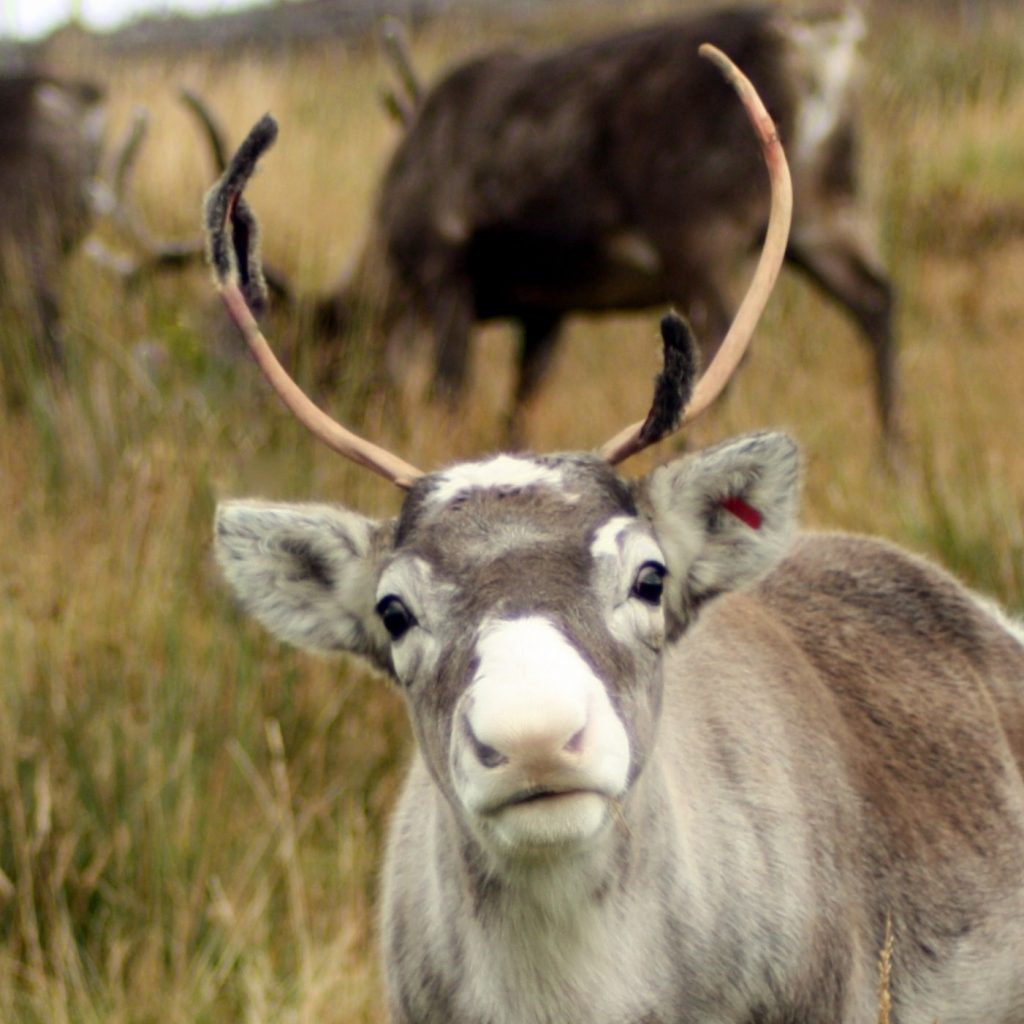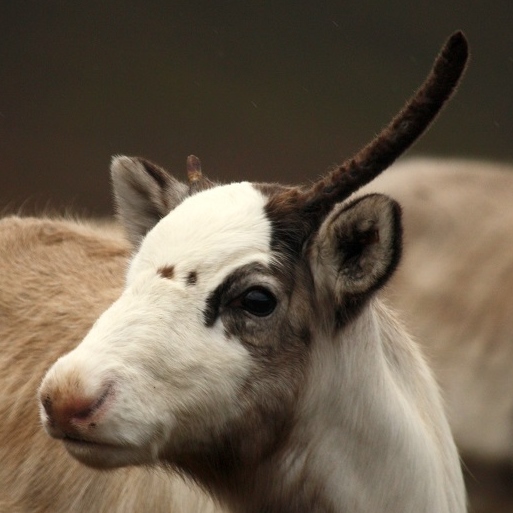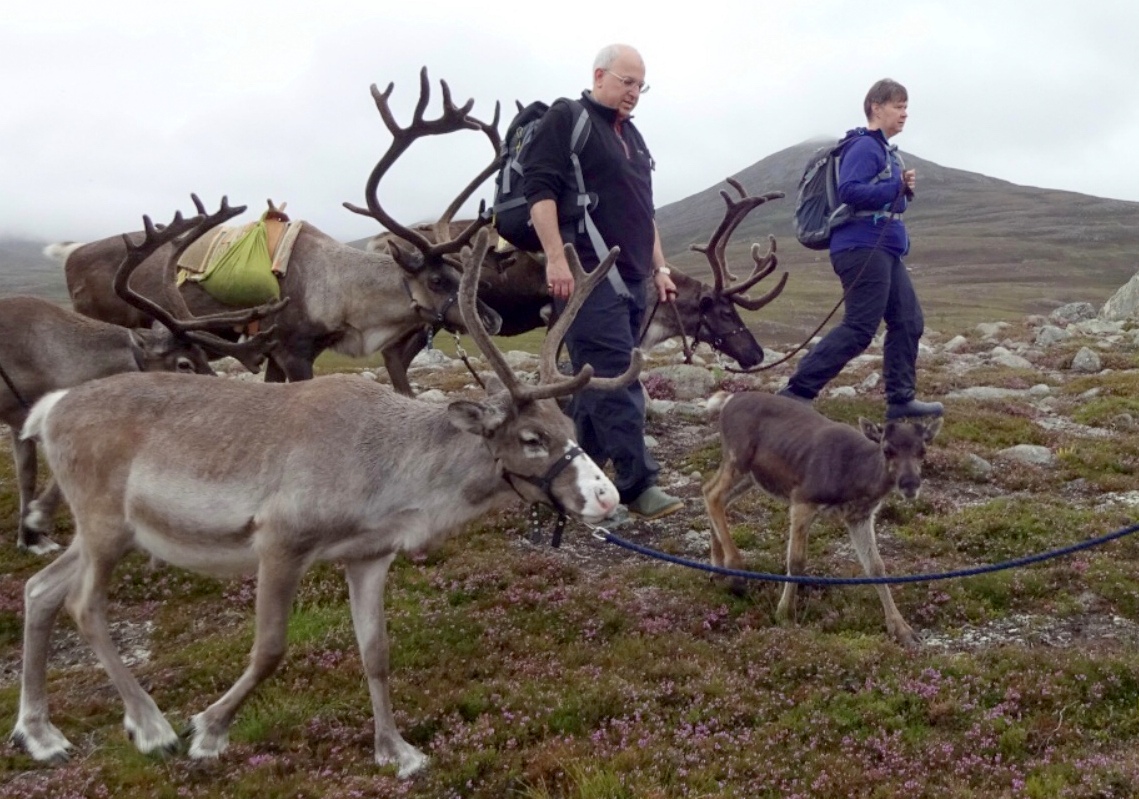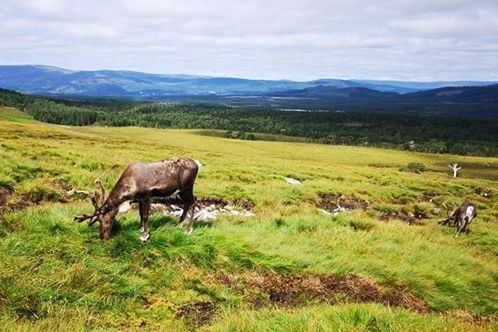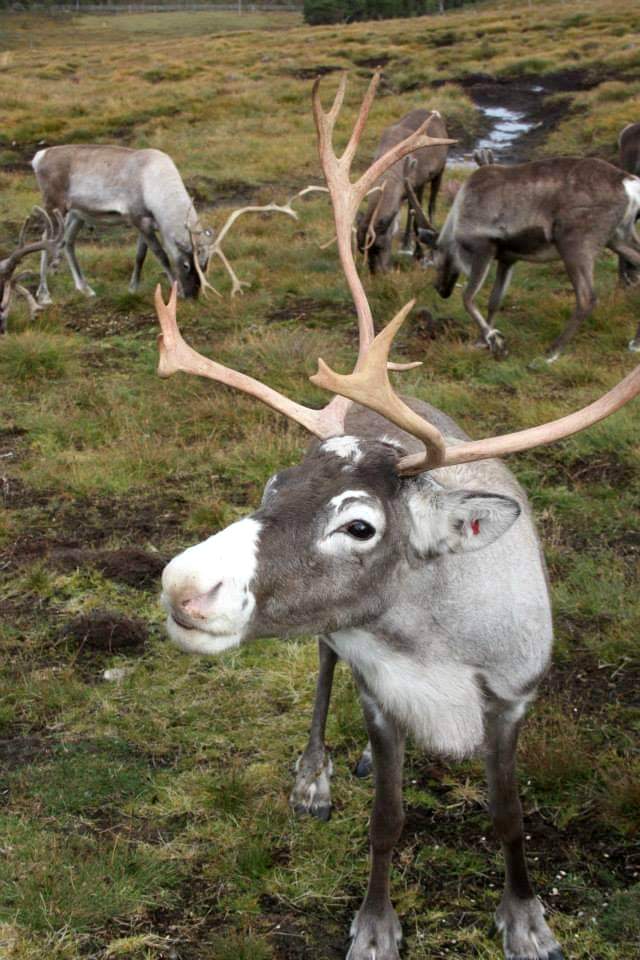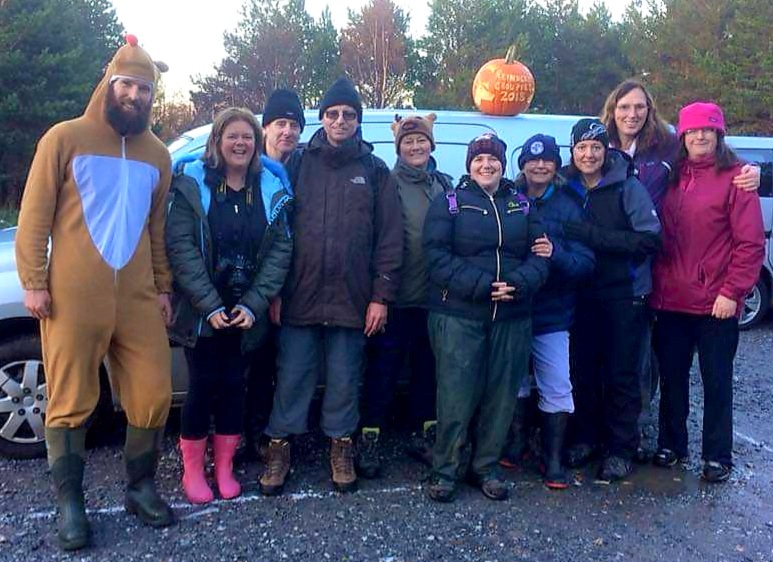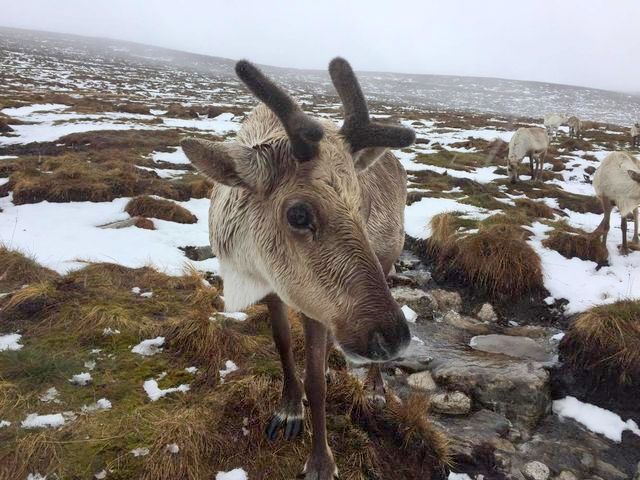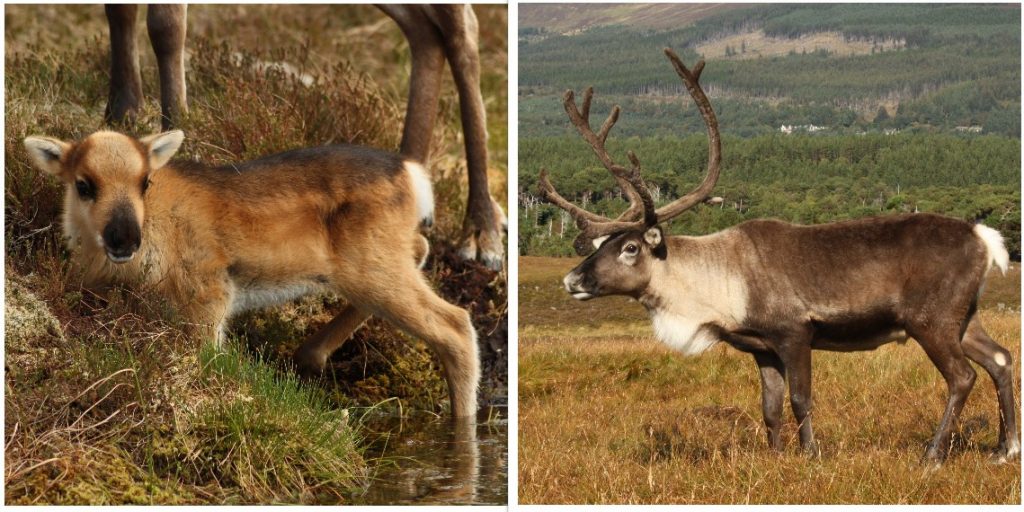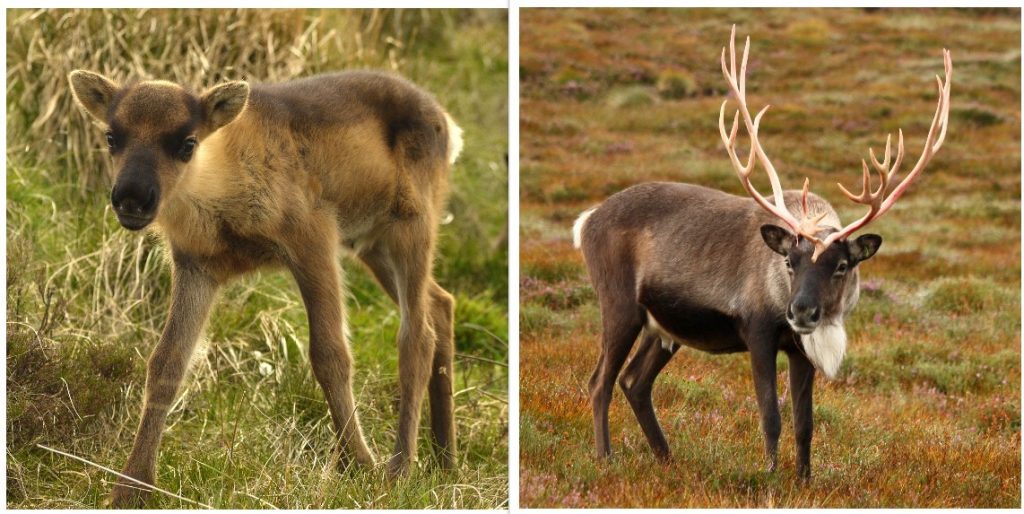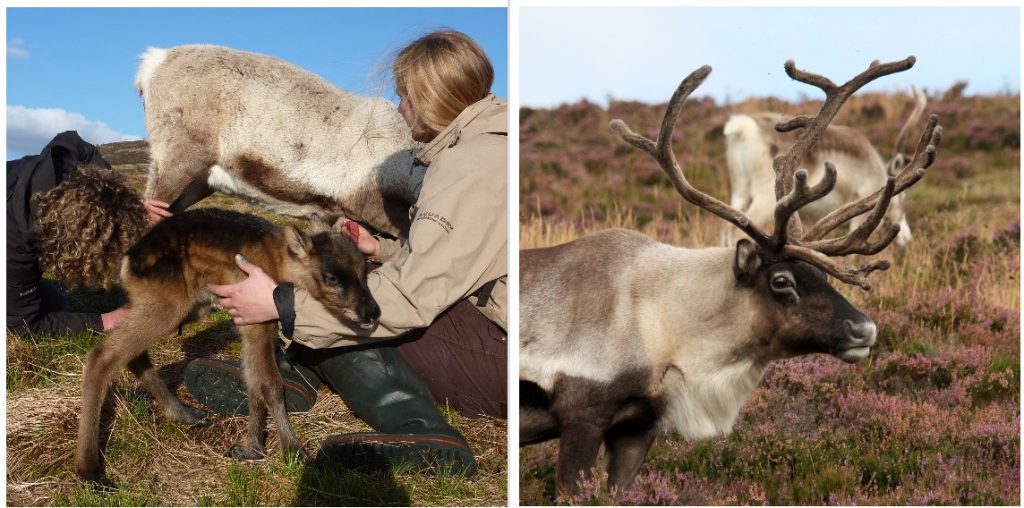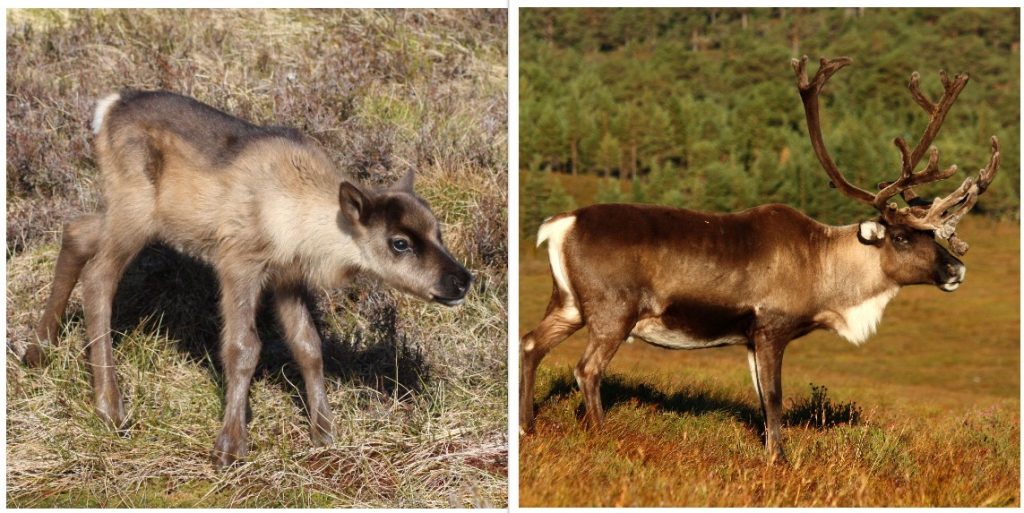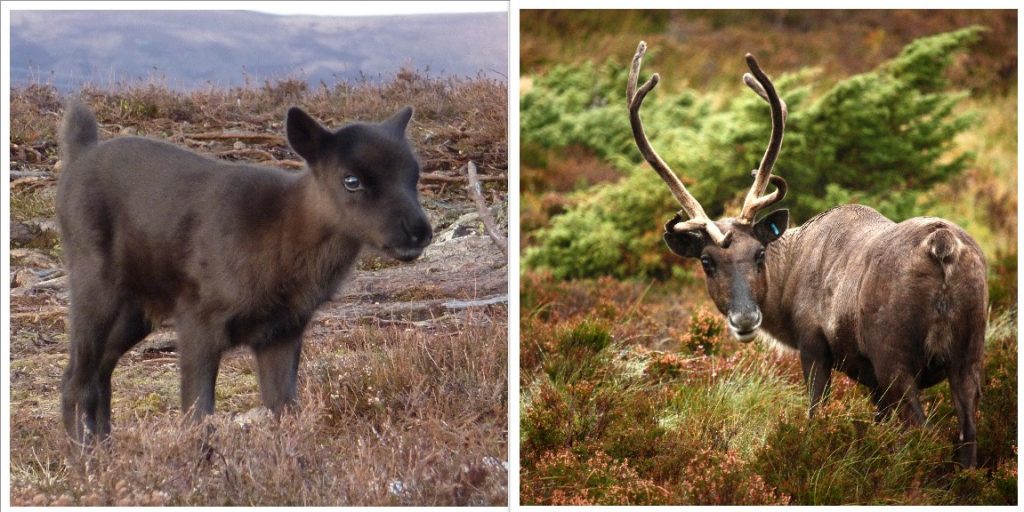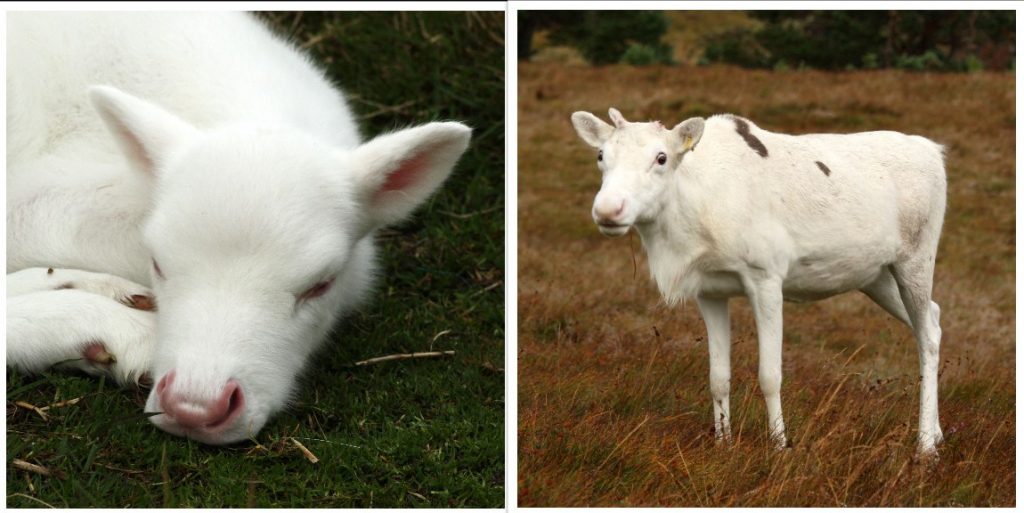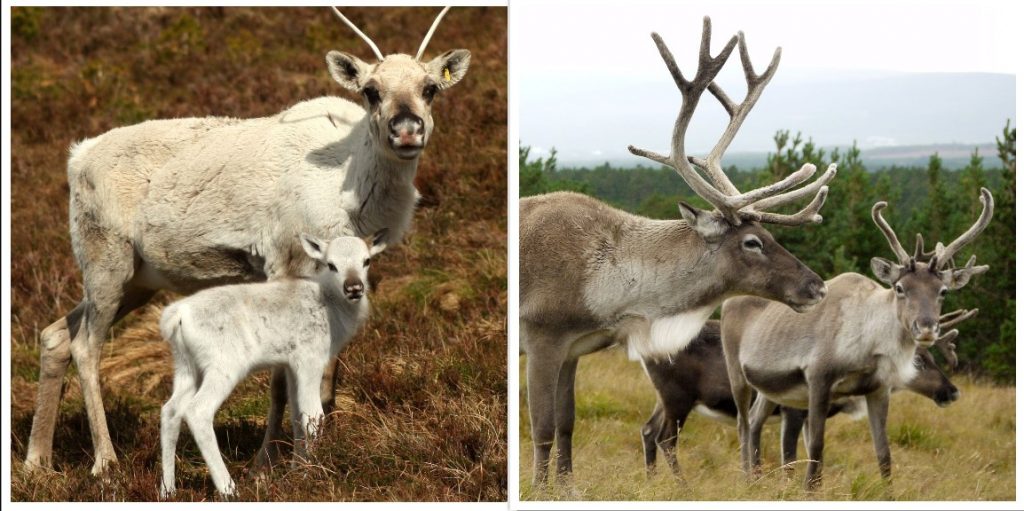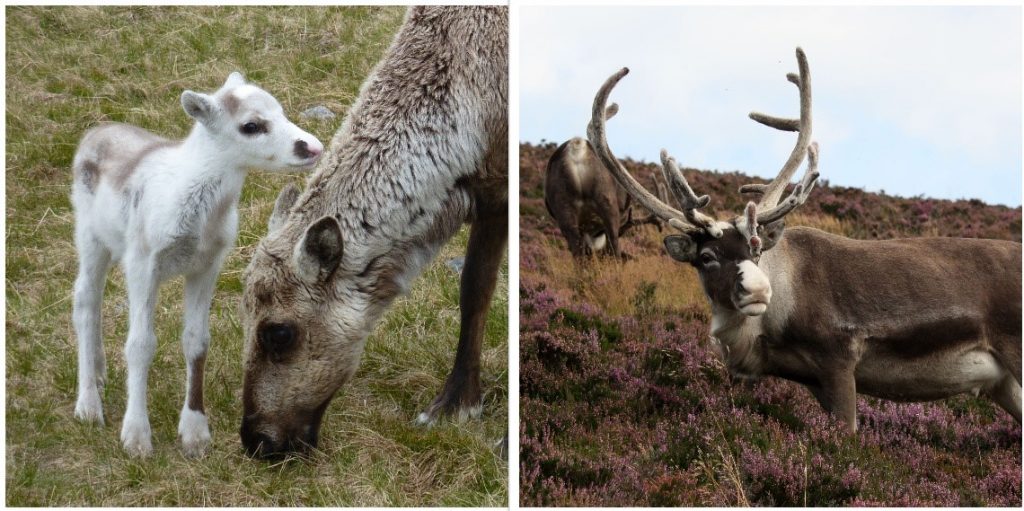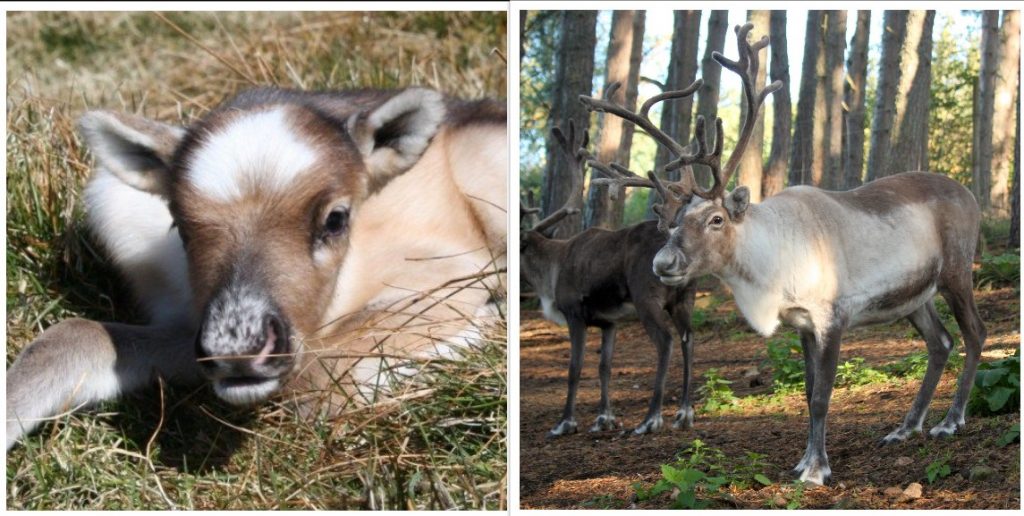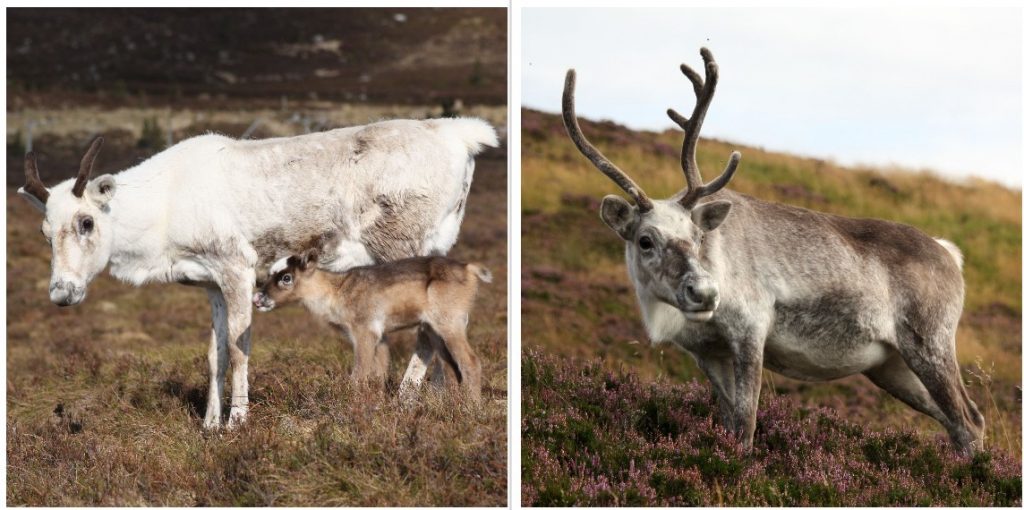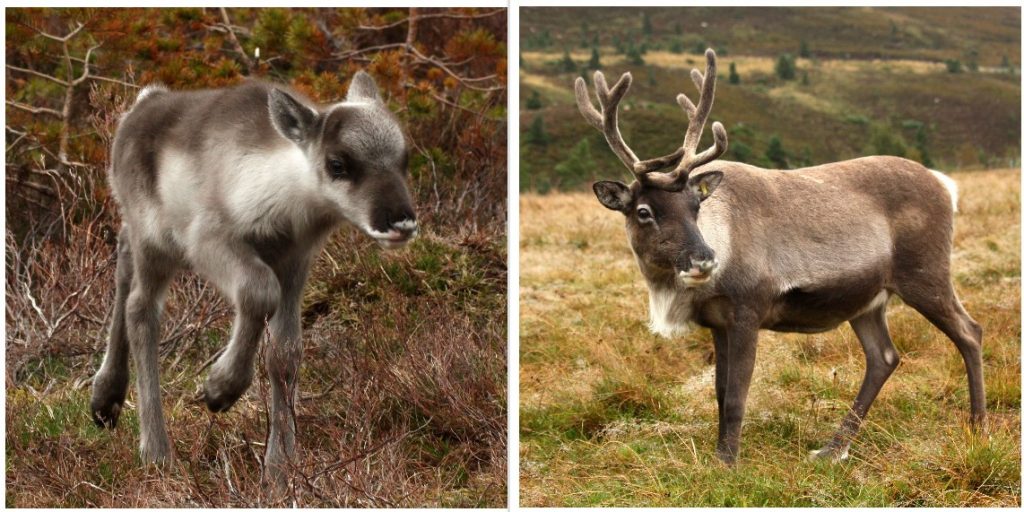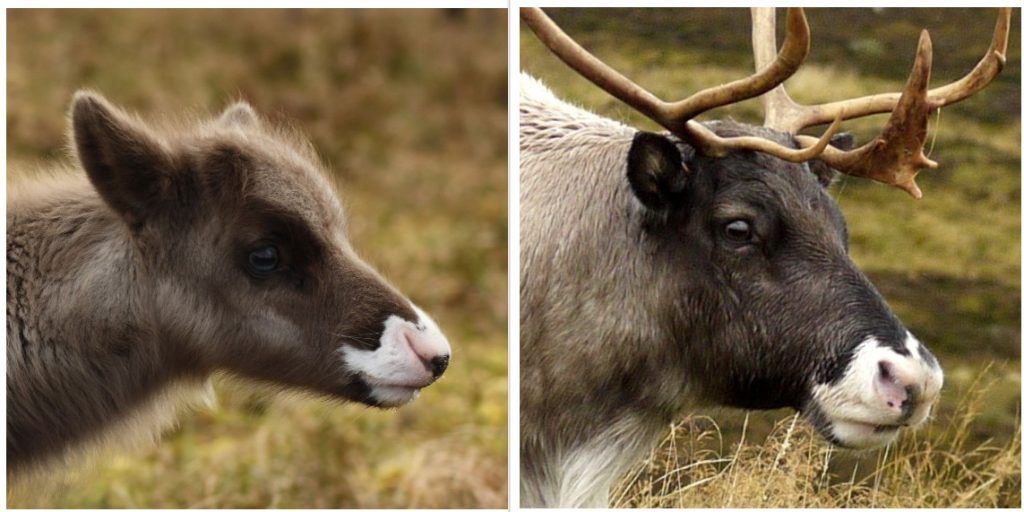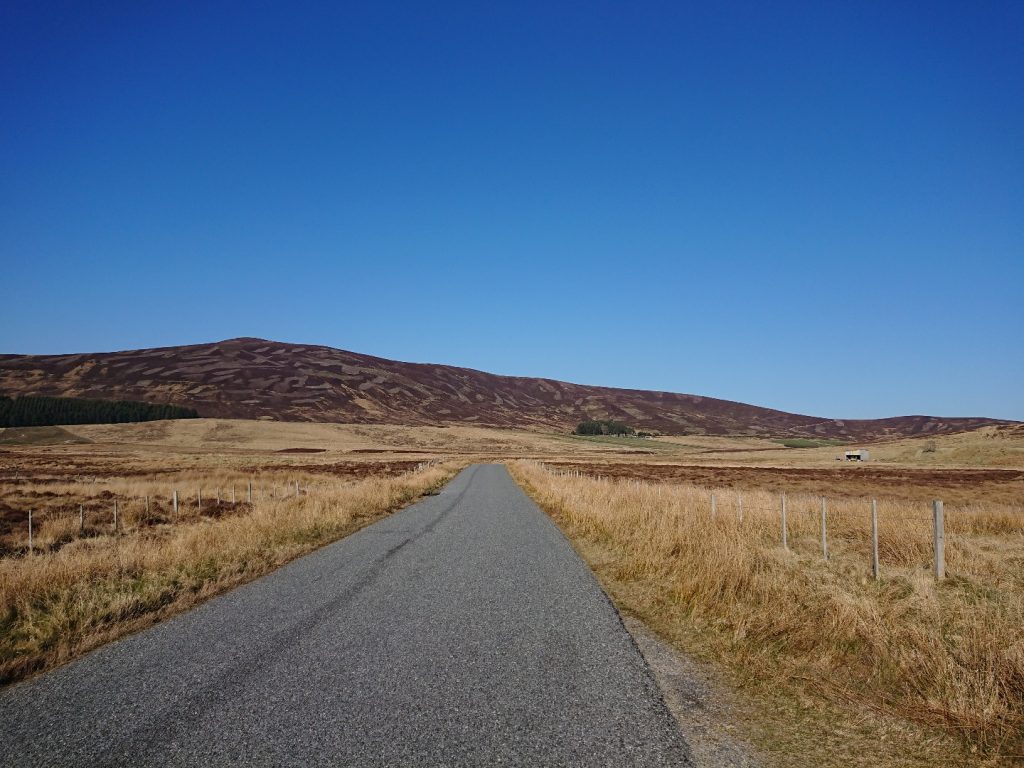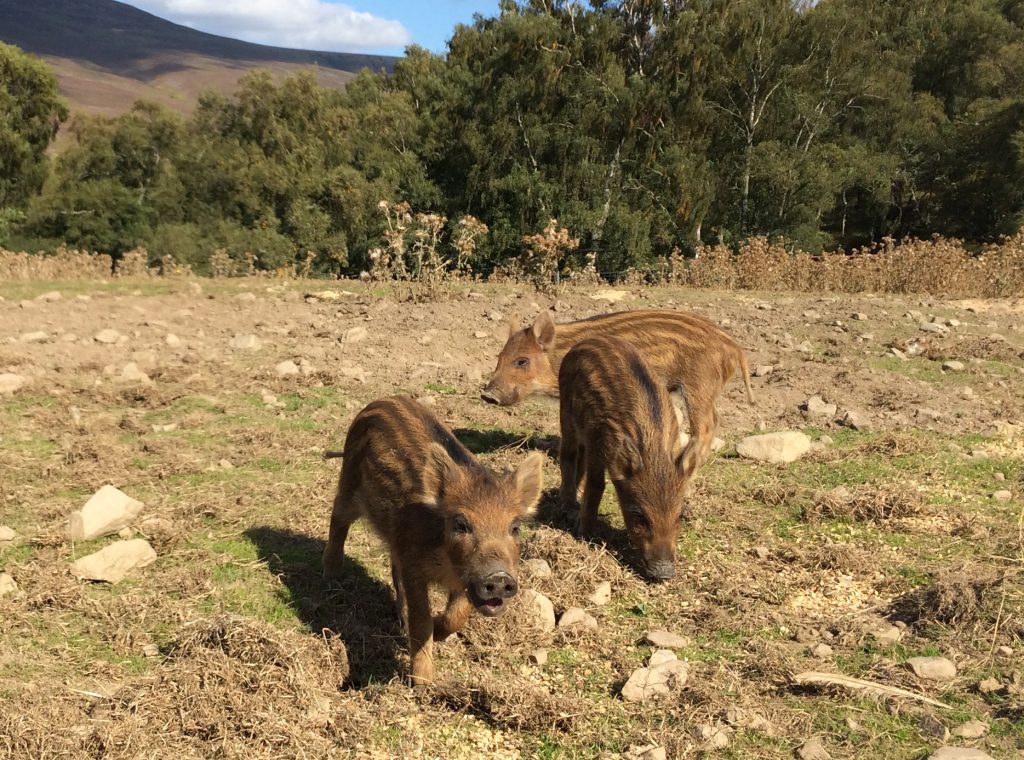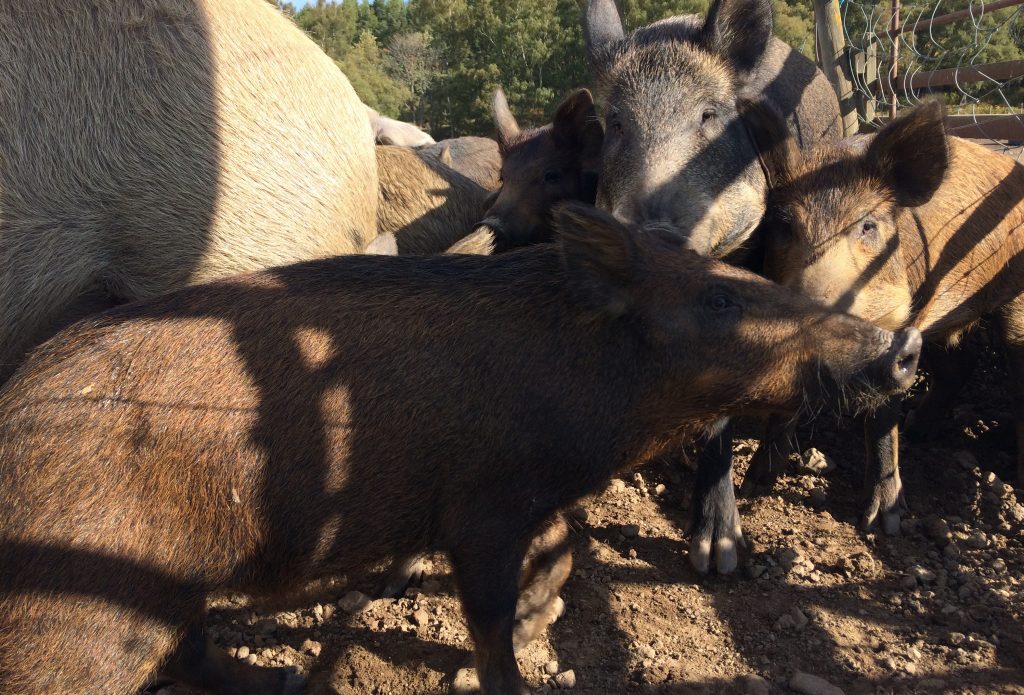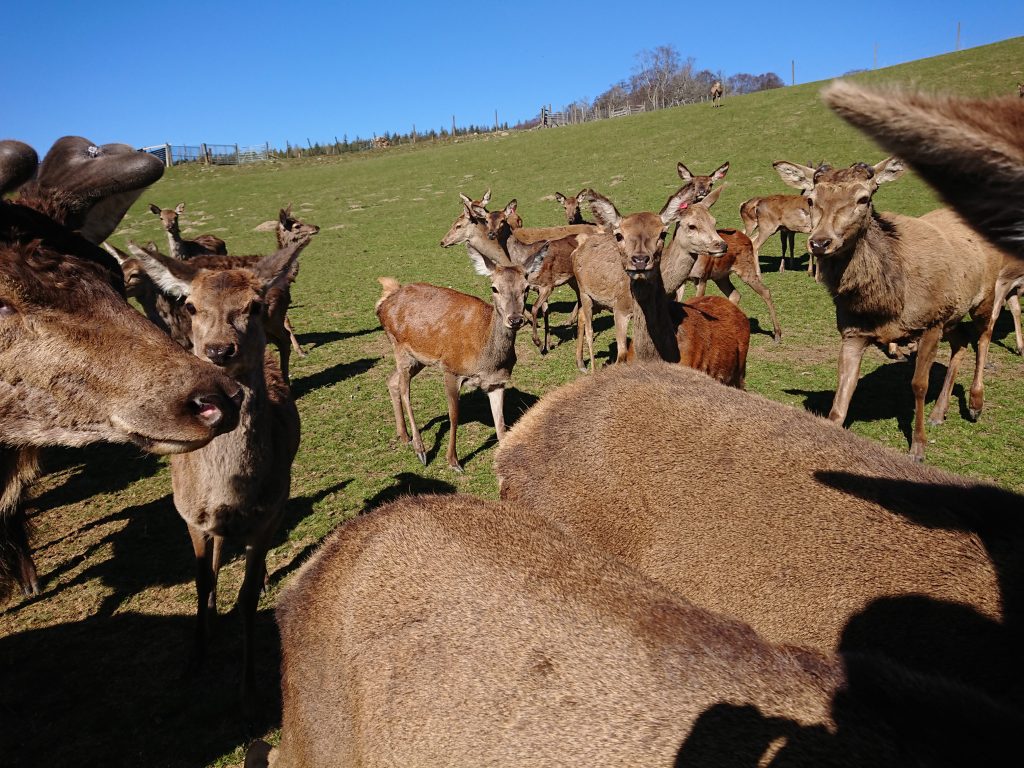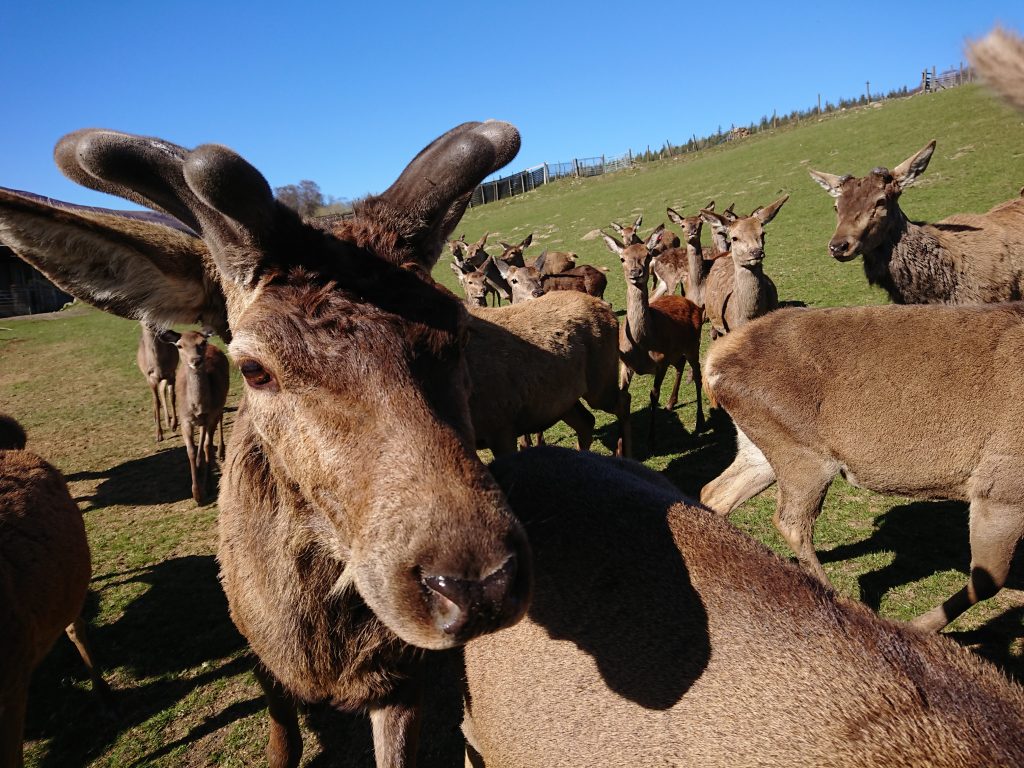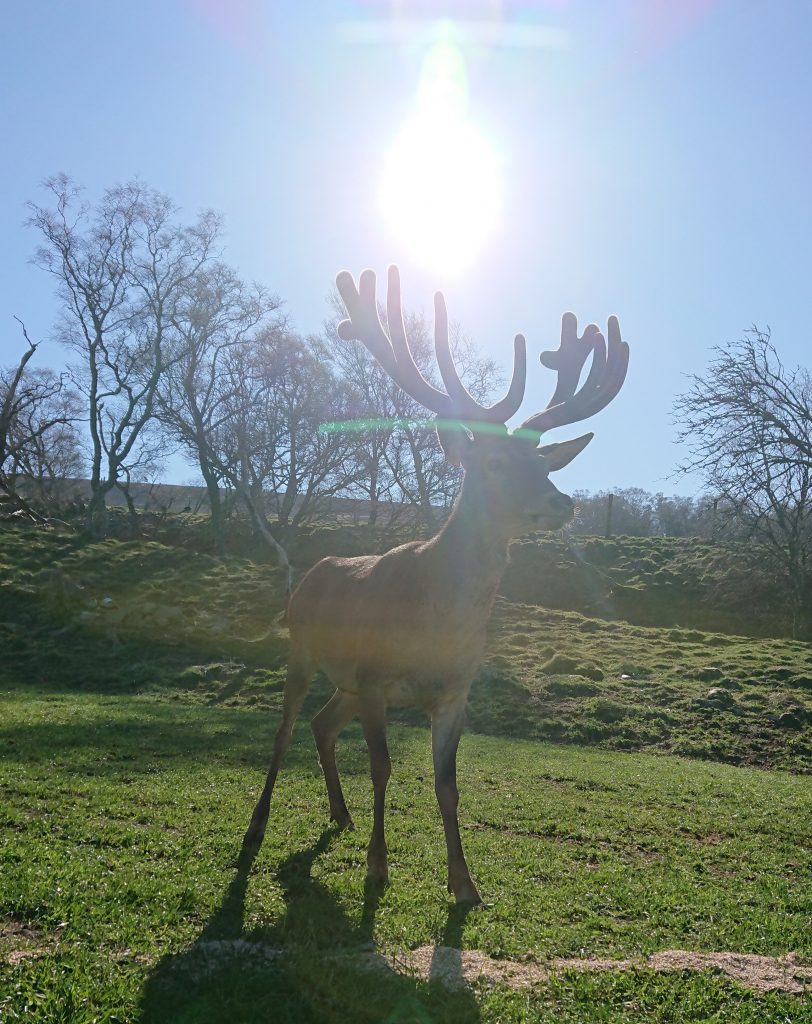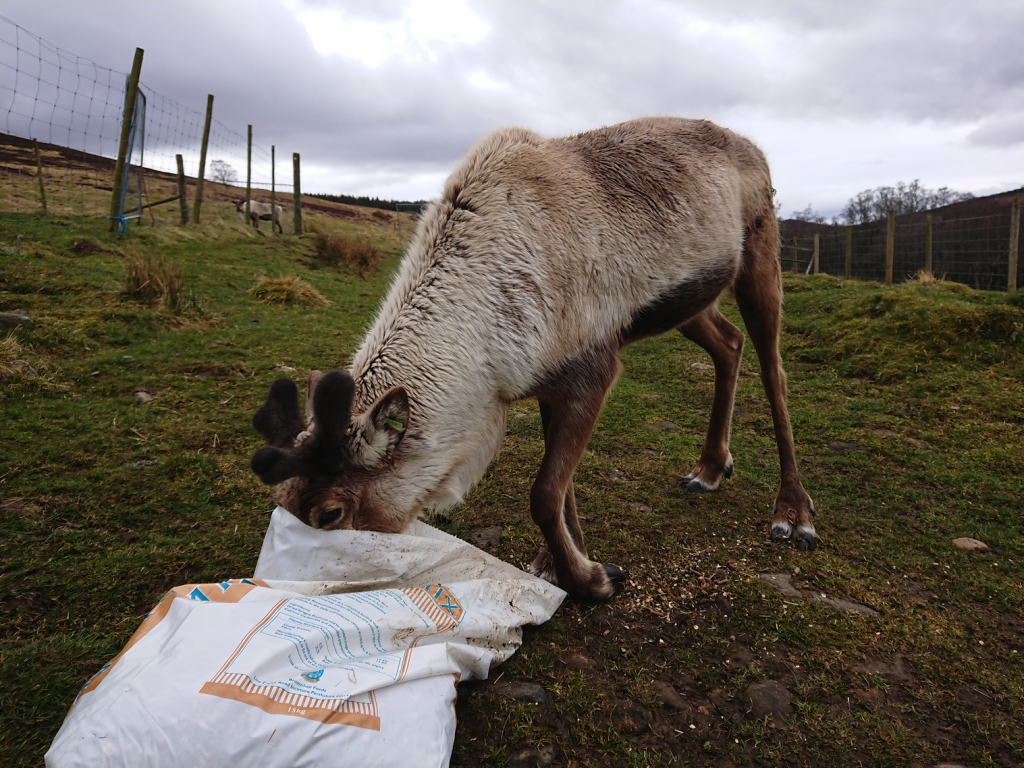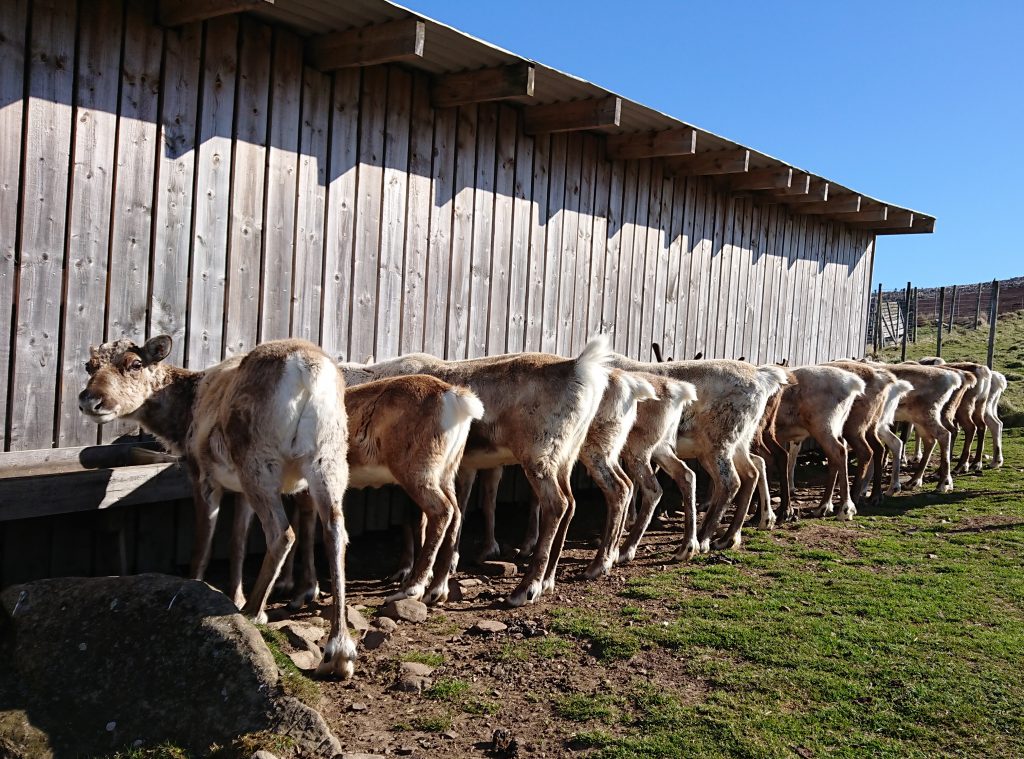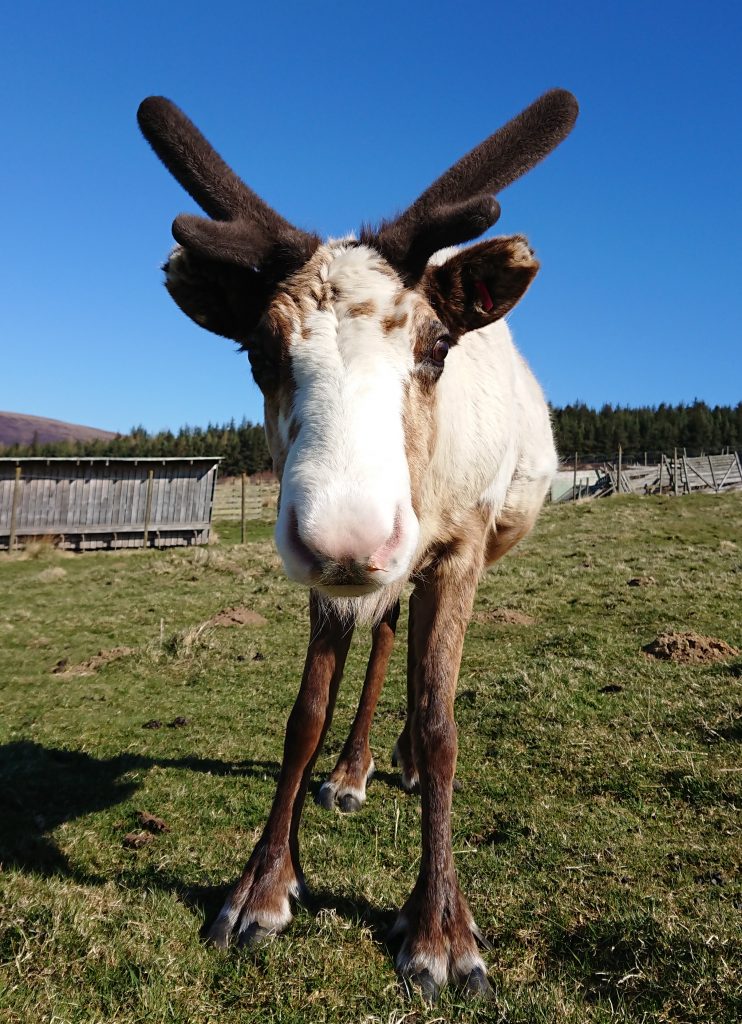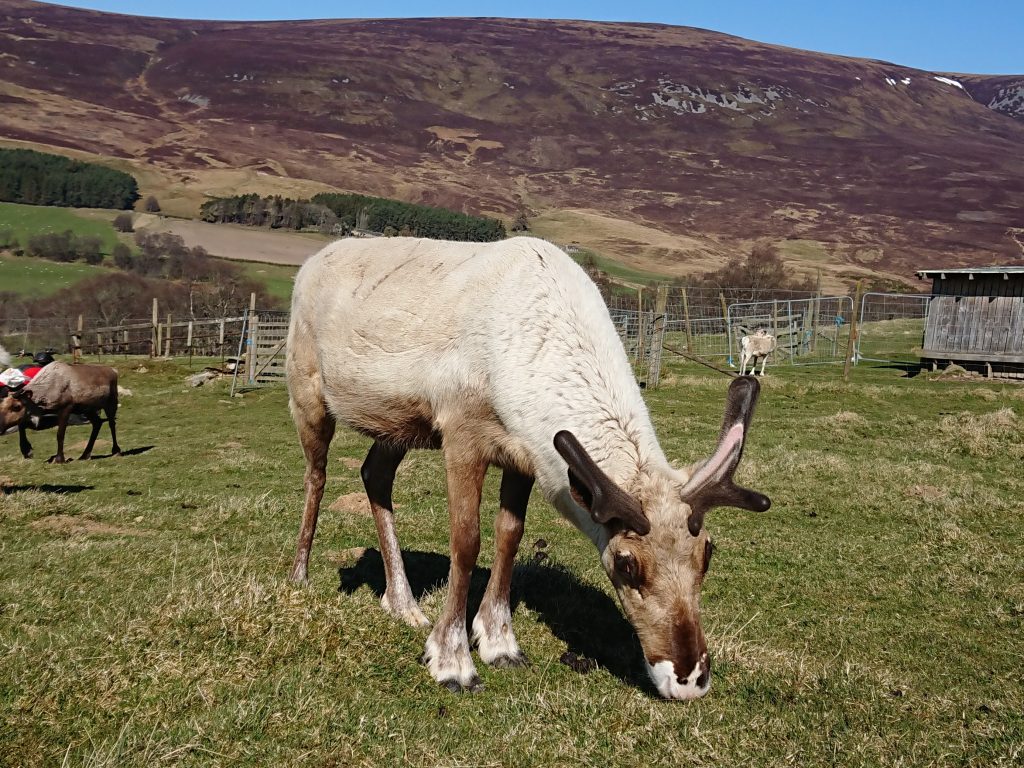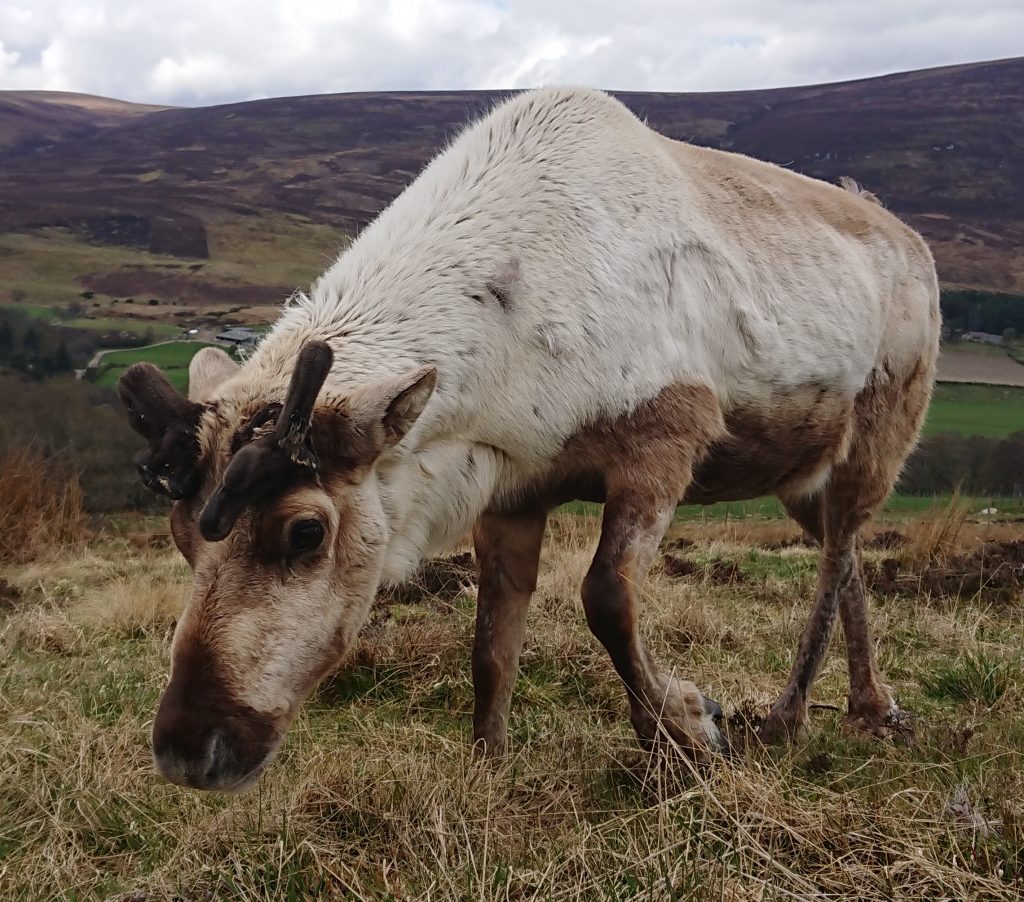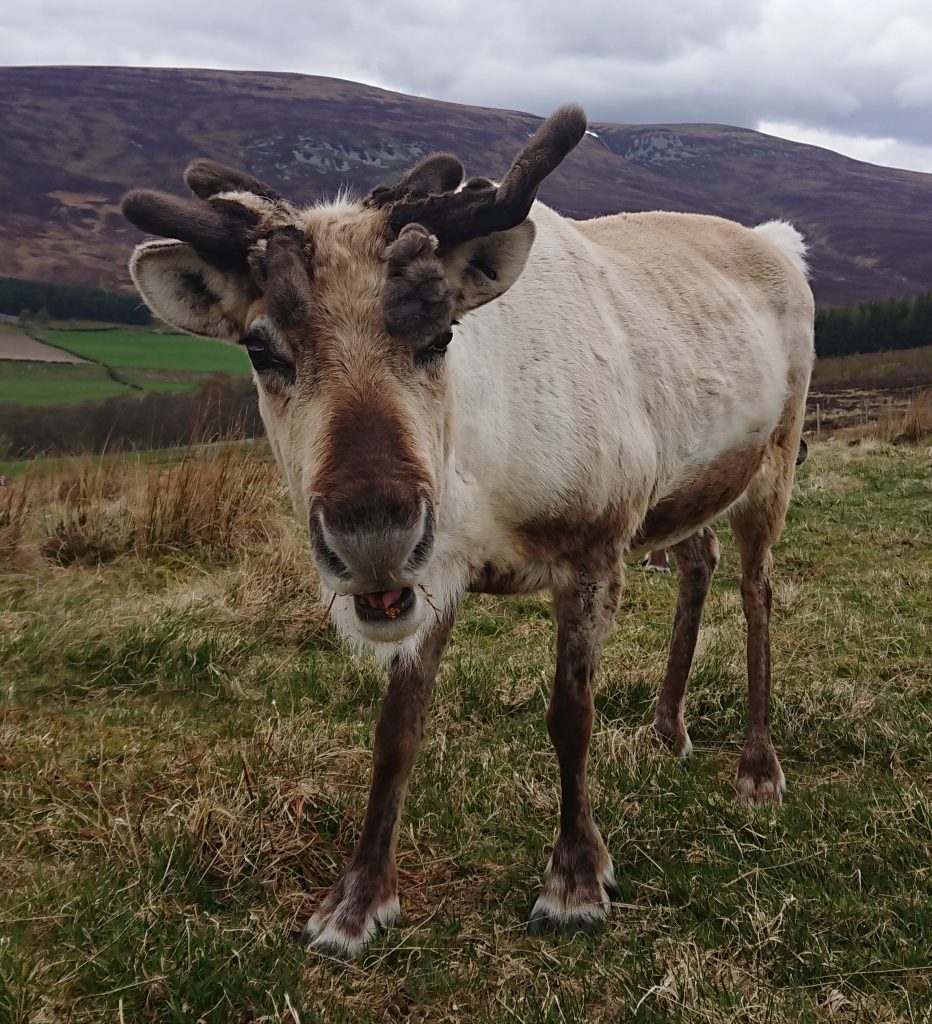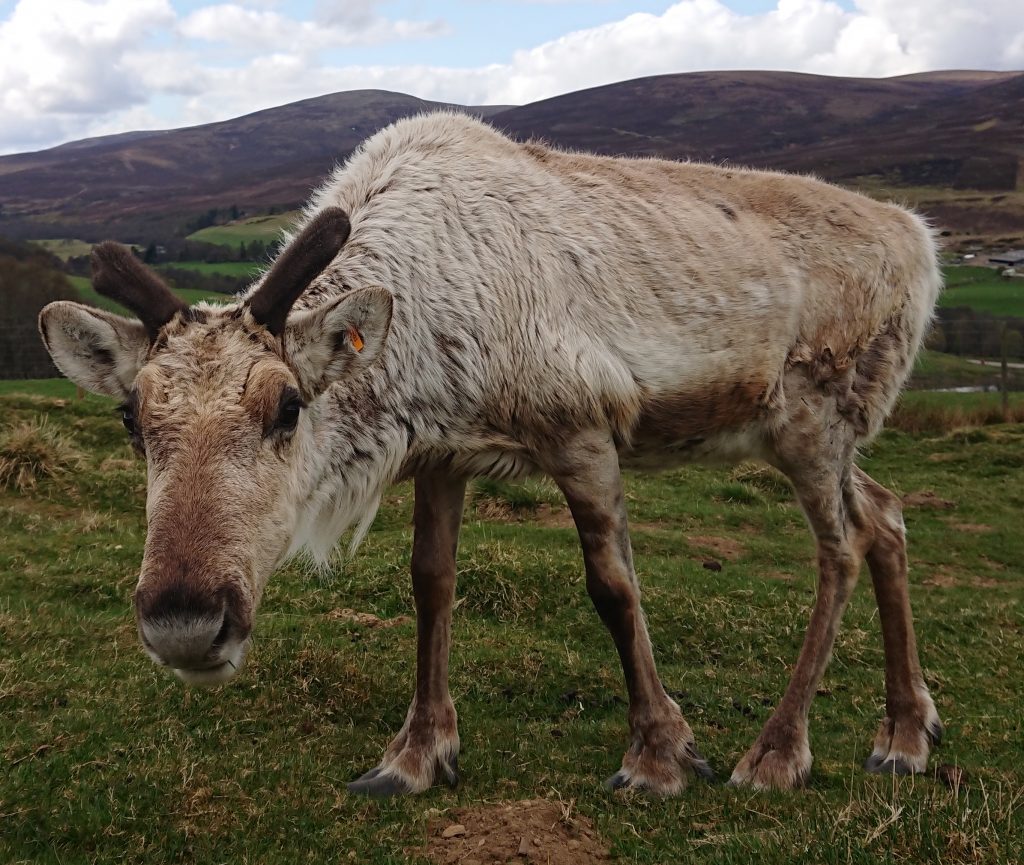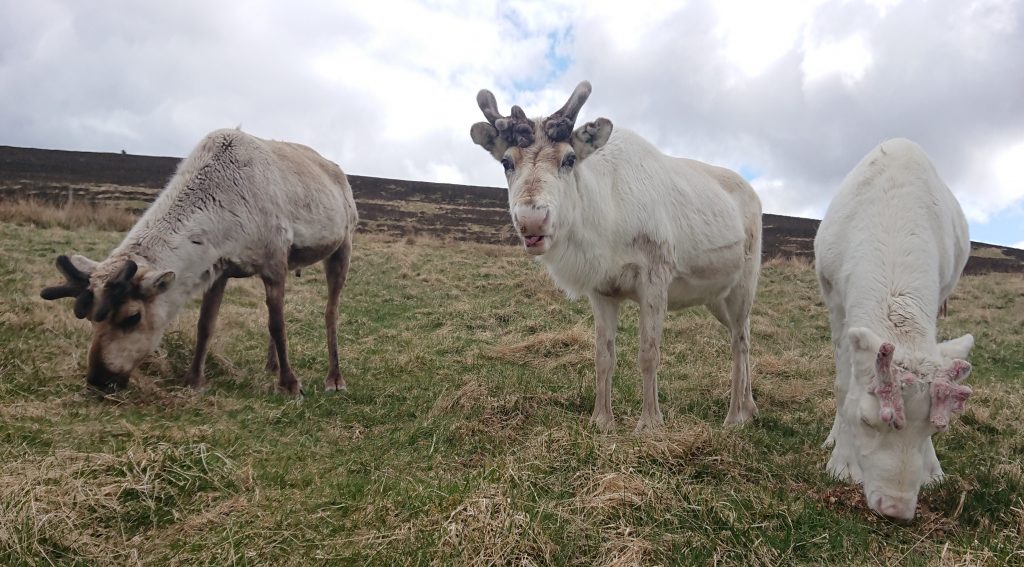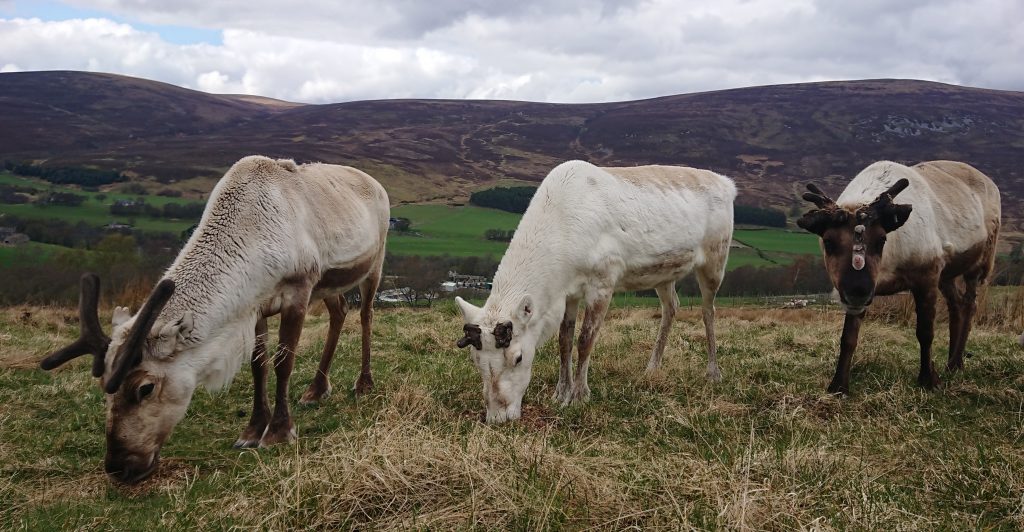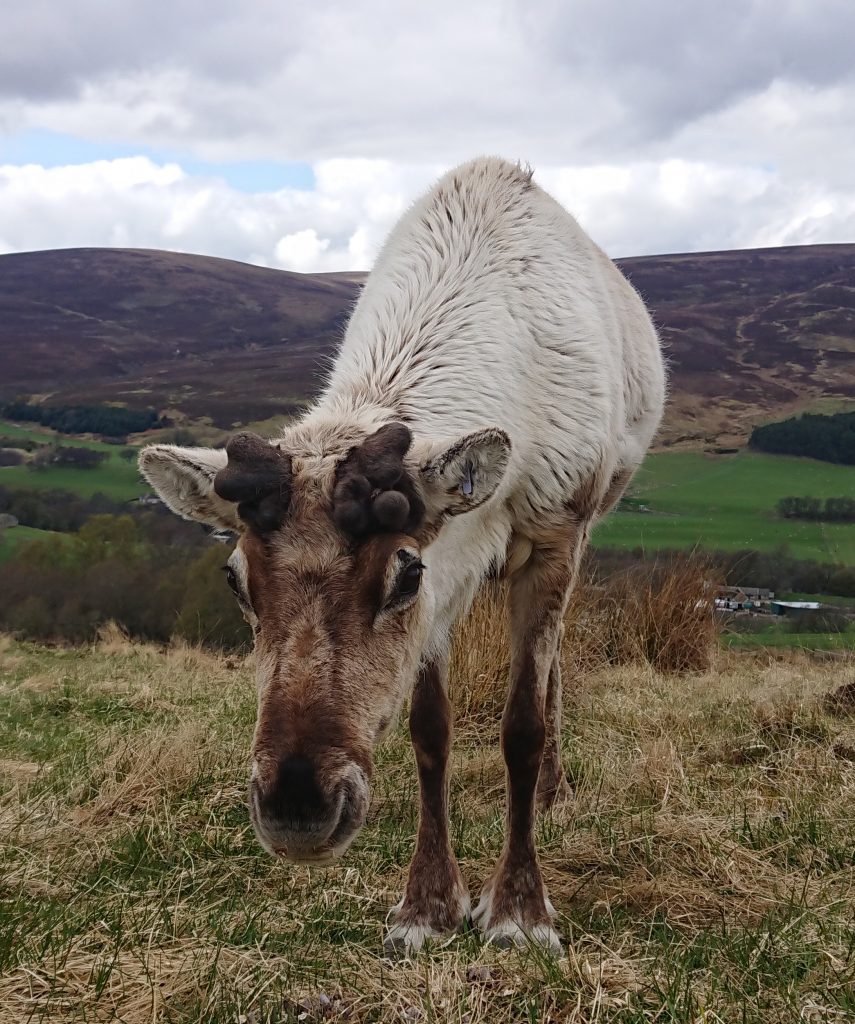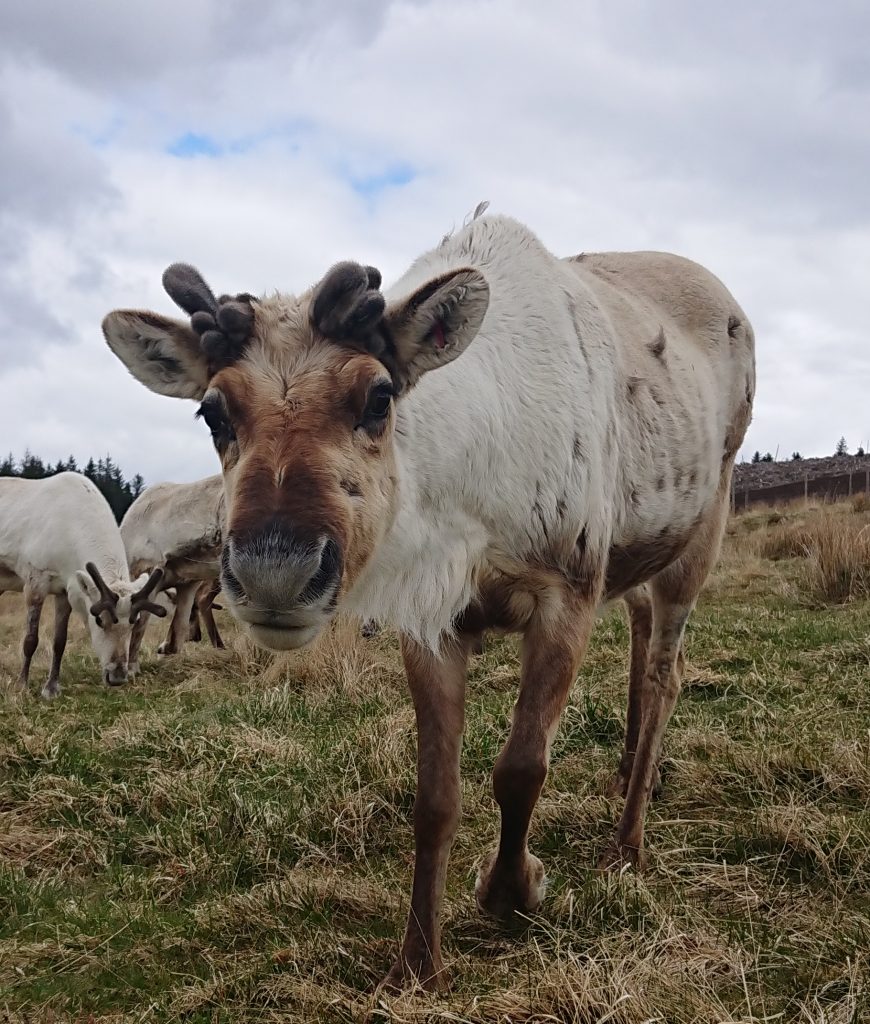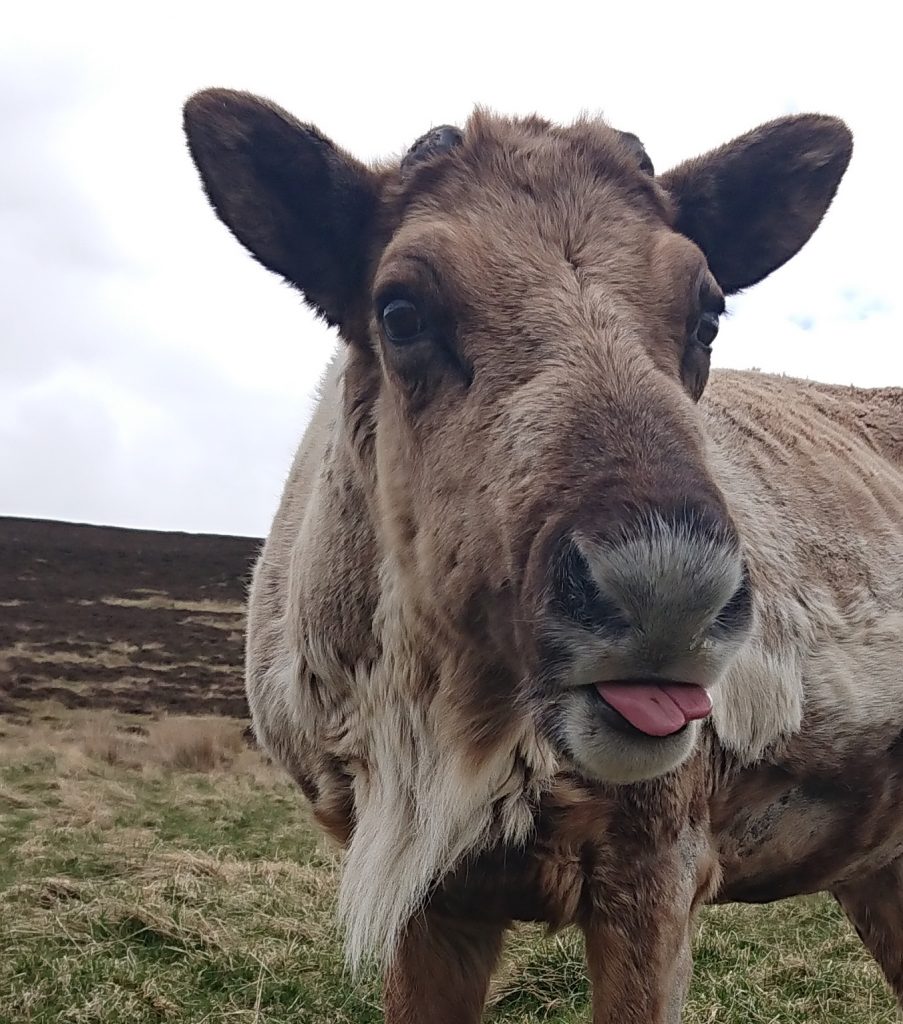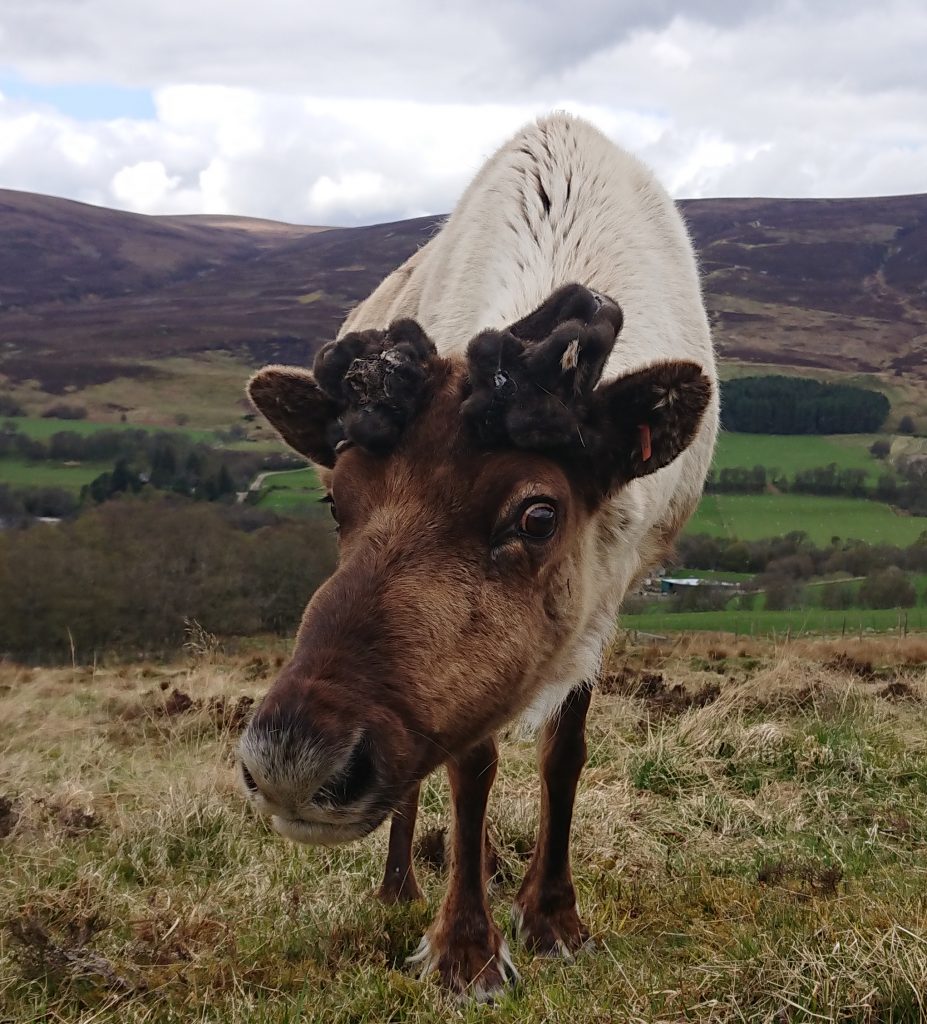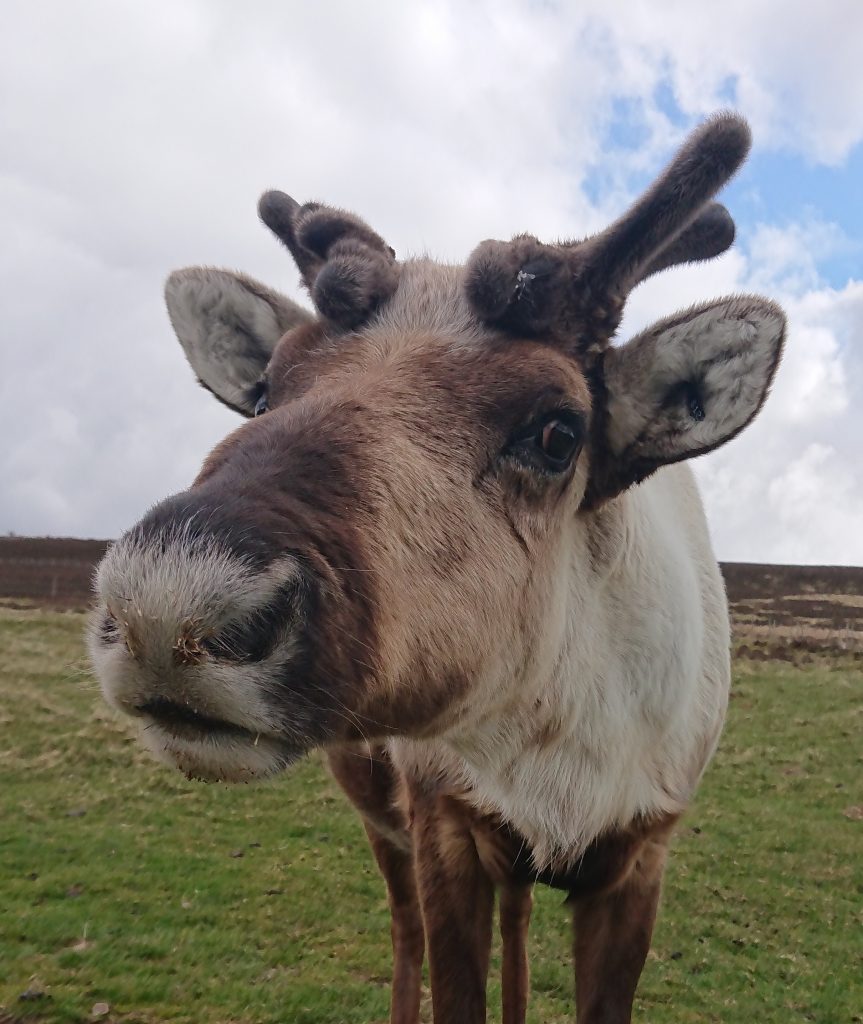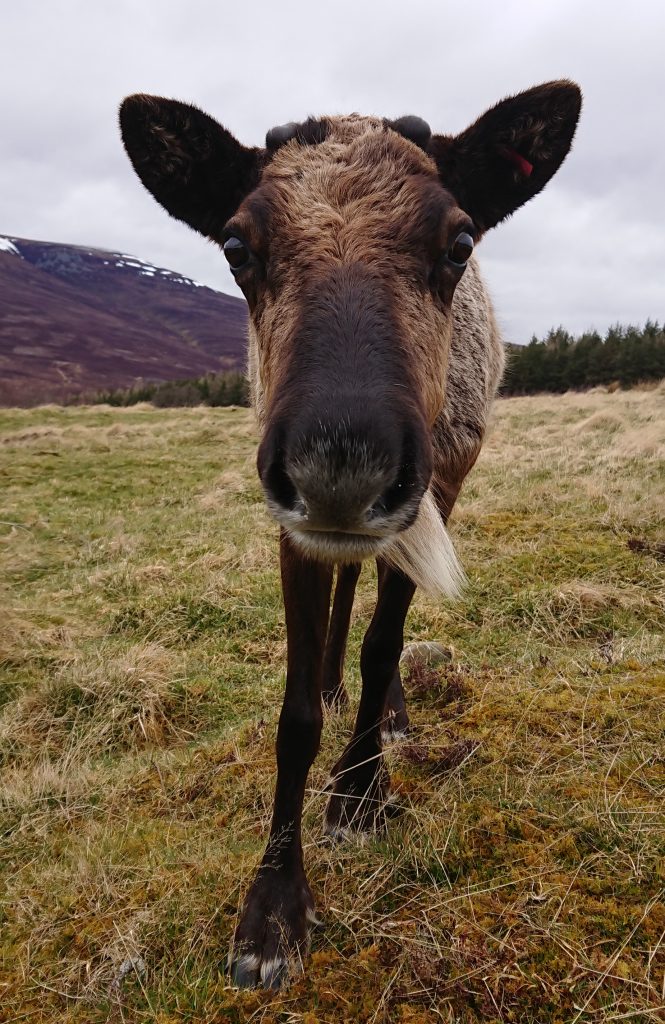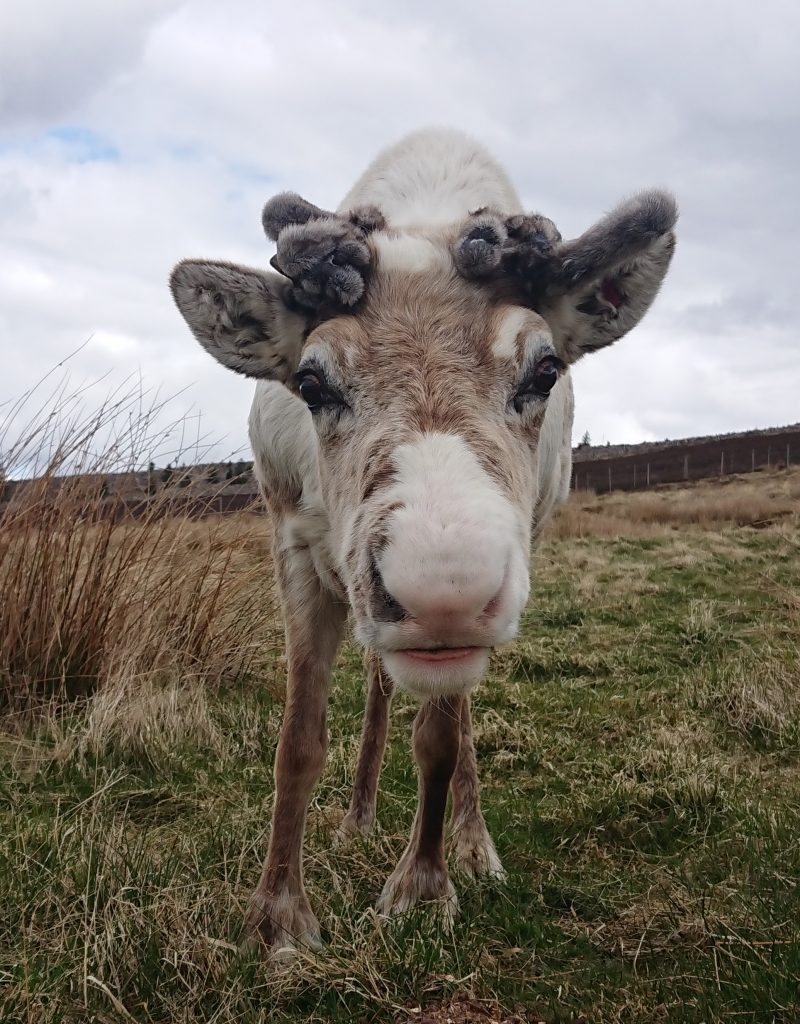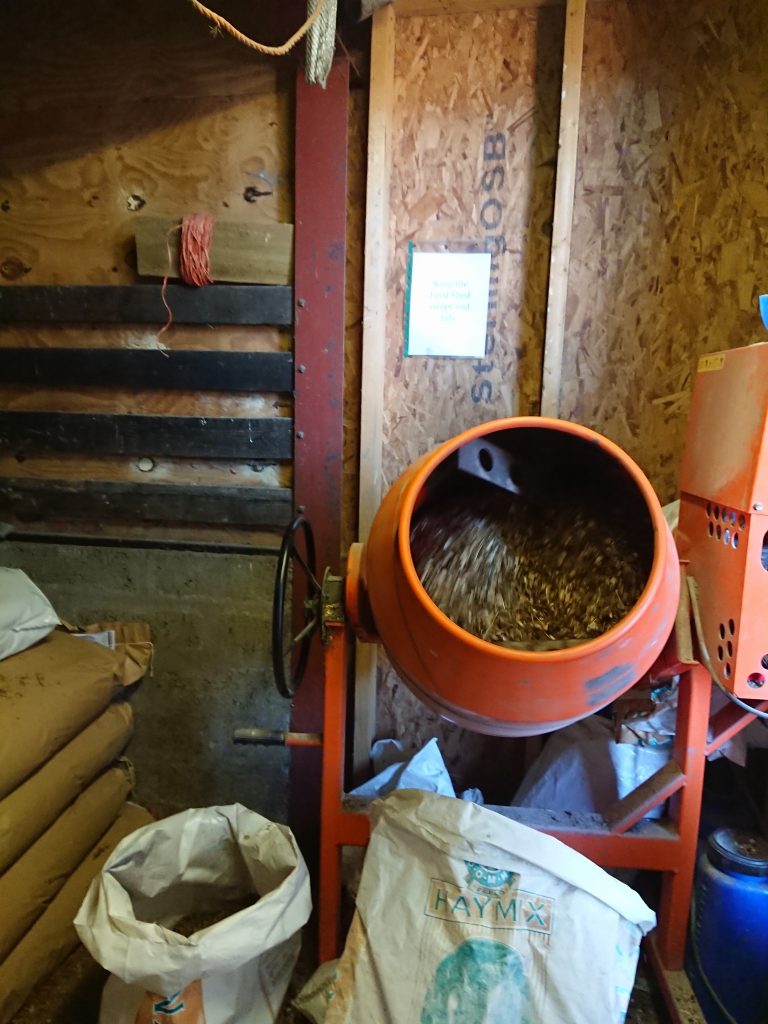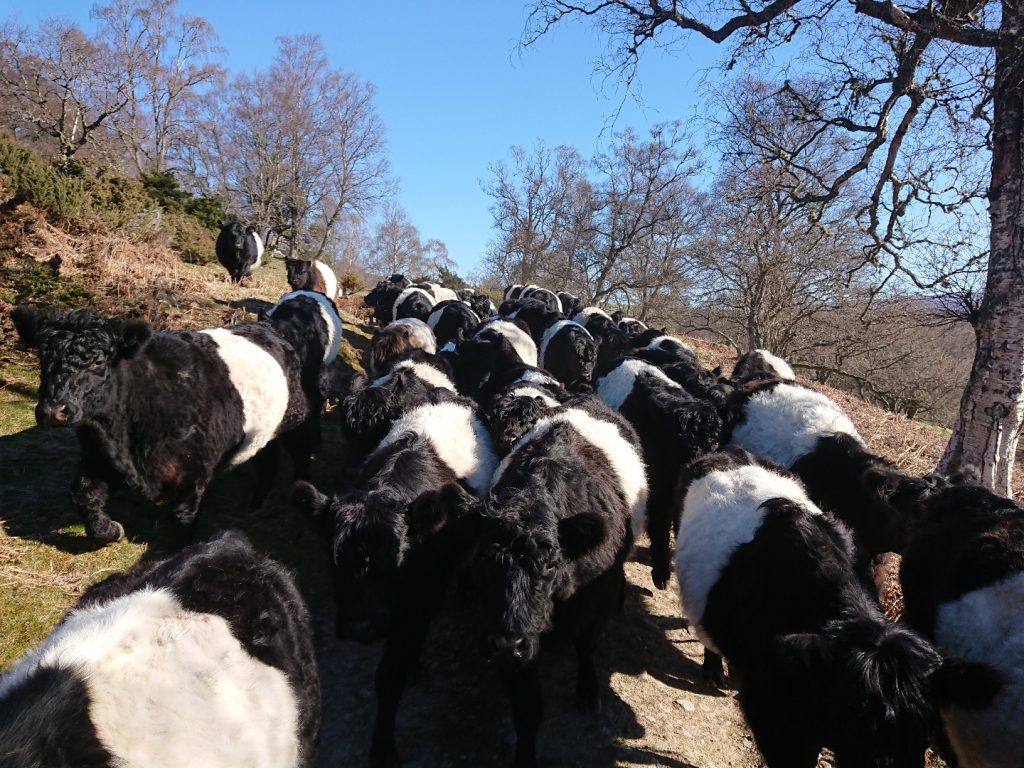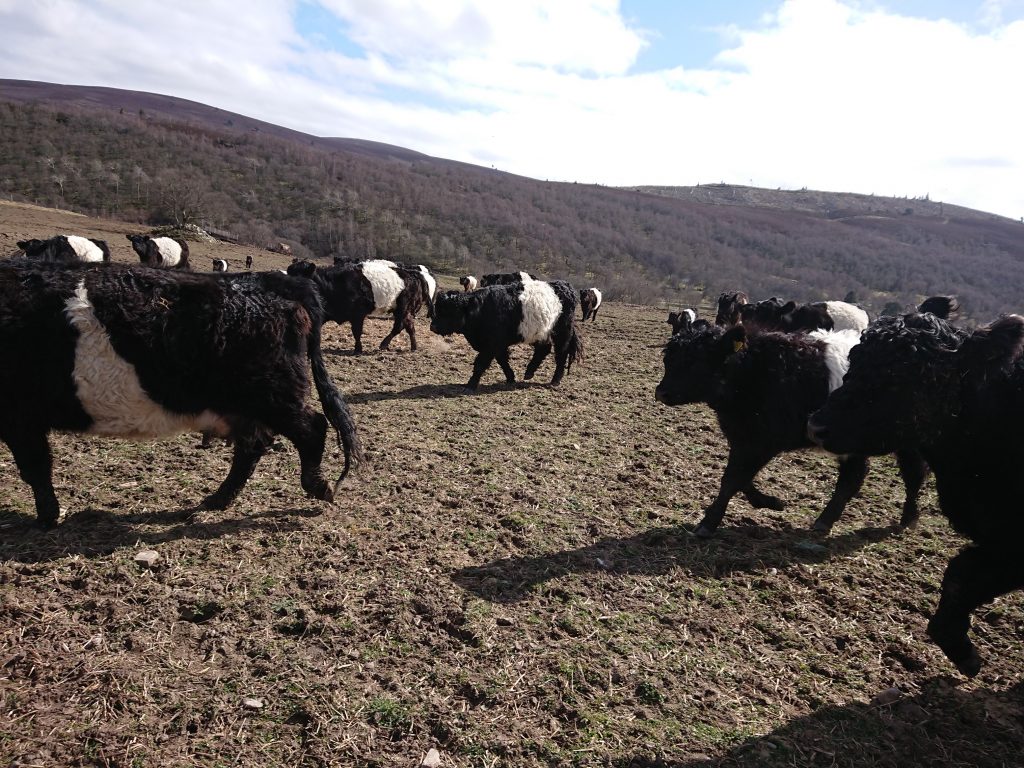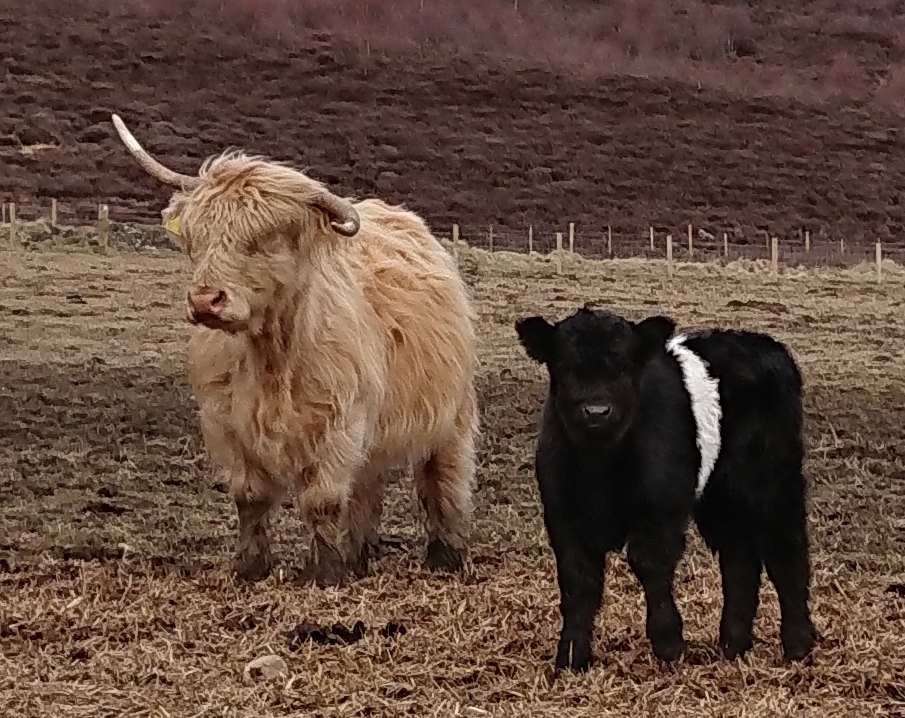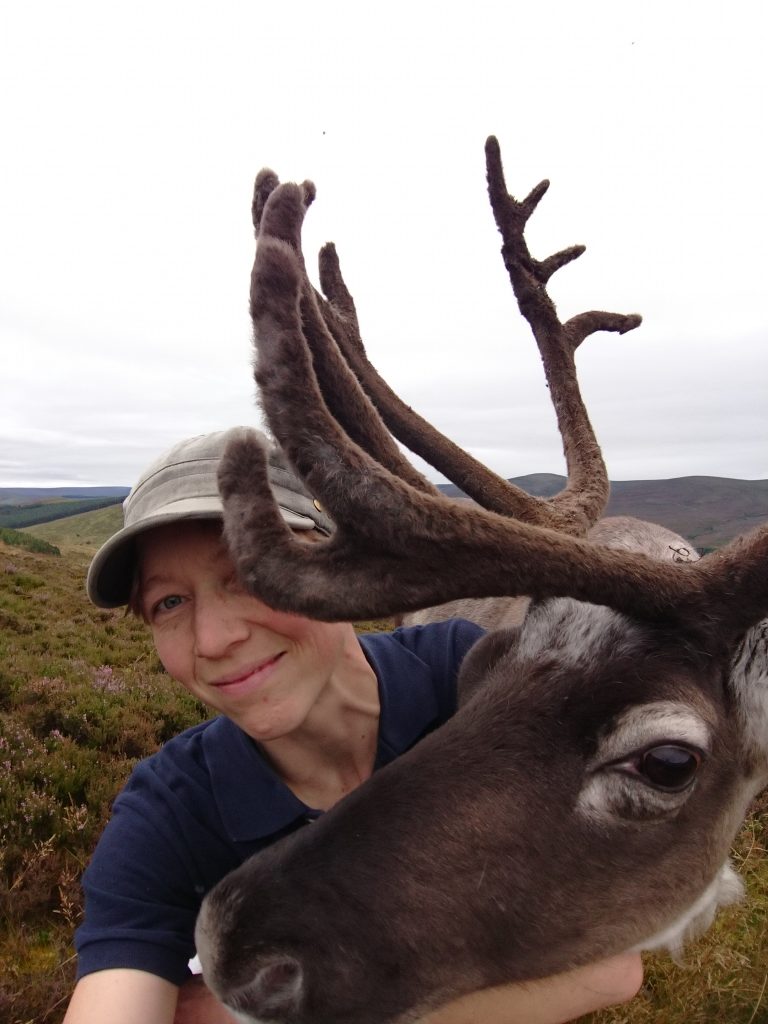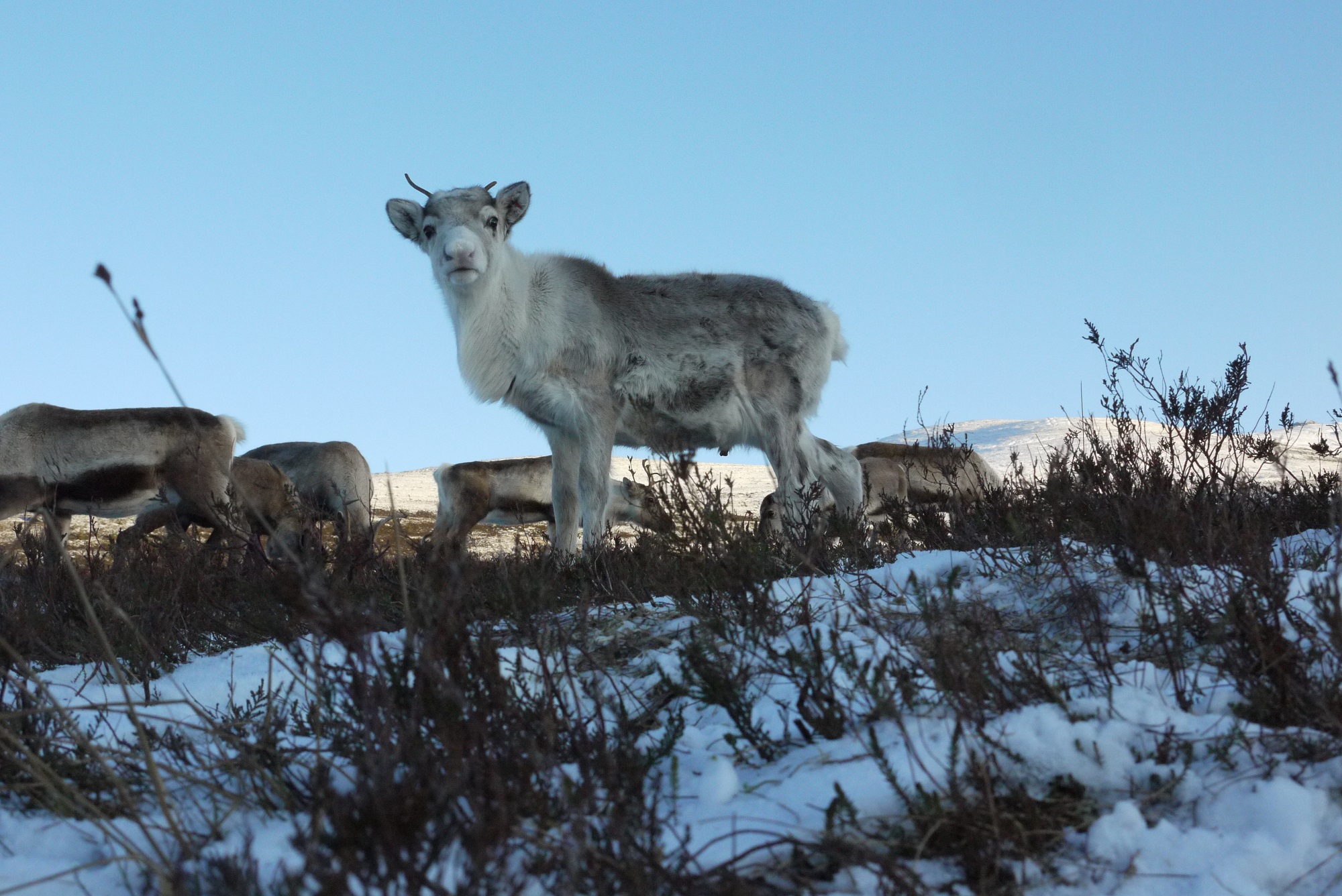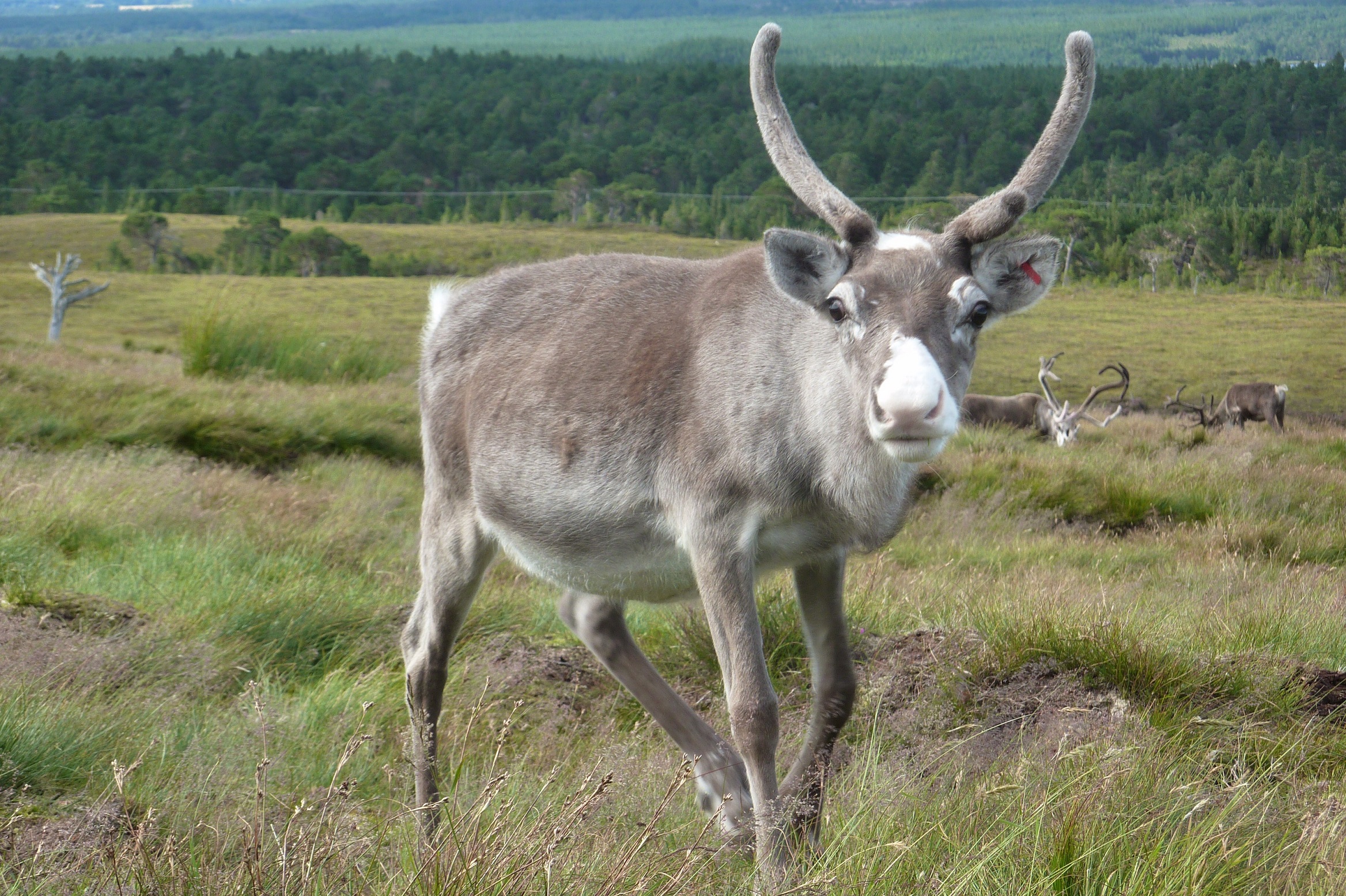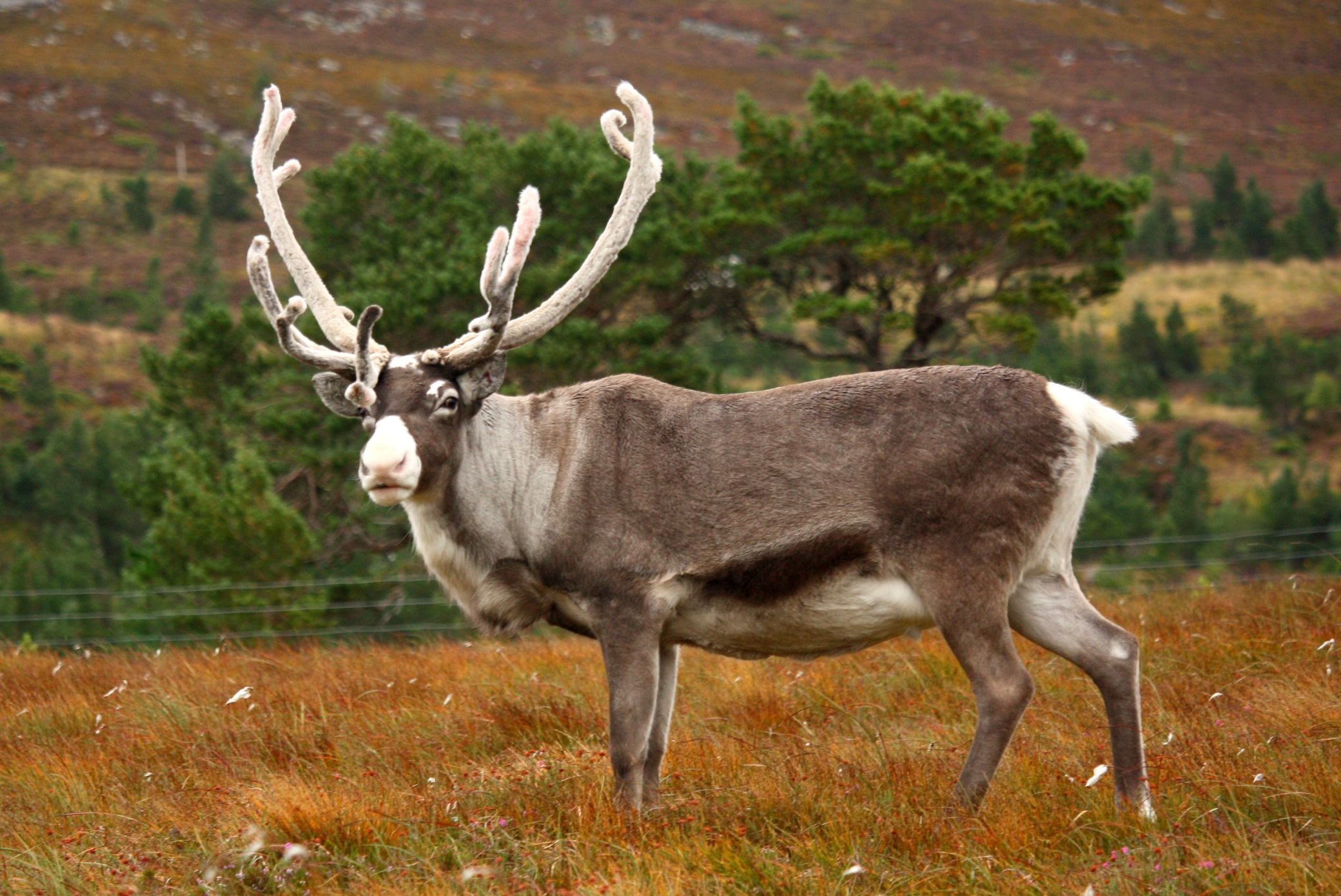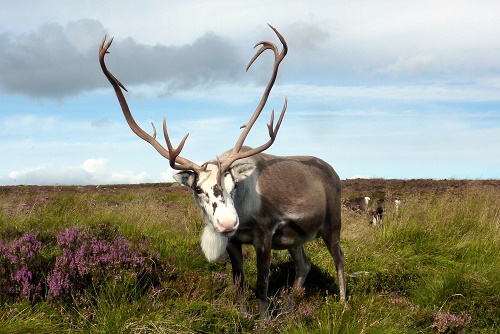During the summer months it’s a good time of year to work on our reindeer handling for both reindeer and herders. With a fair few new faces this summer with seasonal staff picking up a few weeks here and there it’s not just good practice for the reindeer but really important that us herders know the best way to approach, put on halters, putting on harness and generally knowing how to act and move around the reindeer in close proximity.
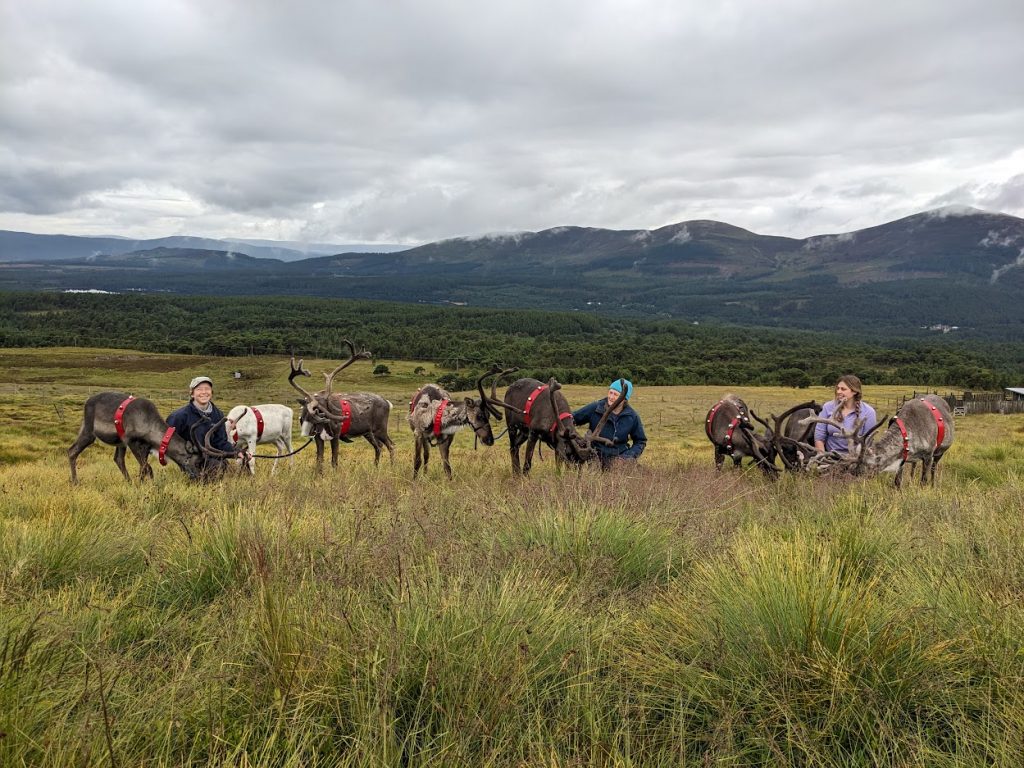
First of all we pick which reindeer will go through the ropes that morning then we split them off into a separate enclosure at their morning feed and bring them up to our shed on the hill. This is where we do all our handling, whether it’s taking temperatures, tending to unwell reindeer or doing a bit training where the reindeer have a halter on and wear a bit of harness. From our shed we can walk out into a quiet enclosure so they get a feel for wearing the harness while walking. Within the group of chosen reindeer there is always an ‘old boy’ who has done lots of training before so already knows the drill and therefore gives off the right vibes. We stand any newbies next to him so they have a calming influence. As well as being the role model to younger reindeer our older trained reindeer are good ones for new staff to learn how to put harness on as they don’t fuss or move around making it a lot easier to explain and learn. Some of our older boys who are trained are: Aztec, Dr Seuss, Poirot, Sherlock, Frost, Clouseau and Athens. We then train anything who is 1, 2 or 3 years old next to them. The 2 and 3 year old have of course done this for the past few years so it tends to be the yearlings who are a bit more twitchy doing it for their first summer. Of course as 5-6 month old calves they went out and about at Christmas so its not completely new to them.
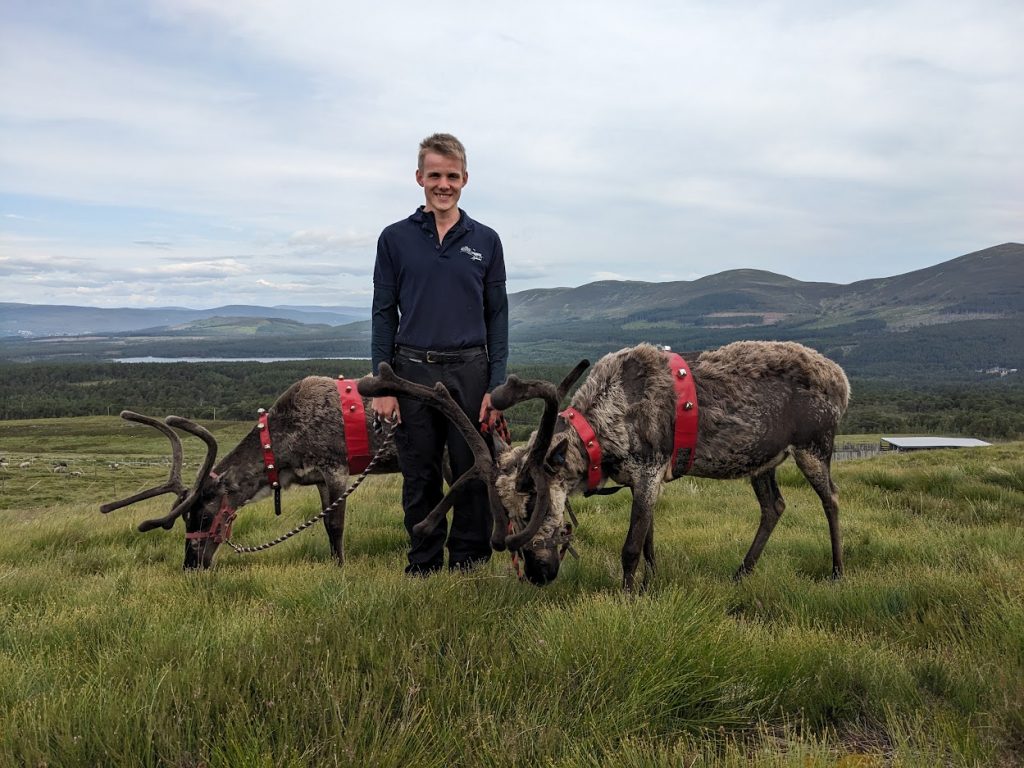
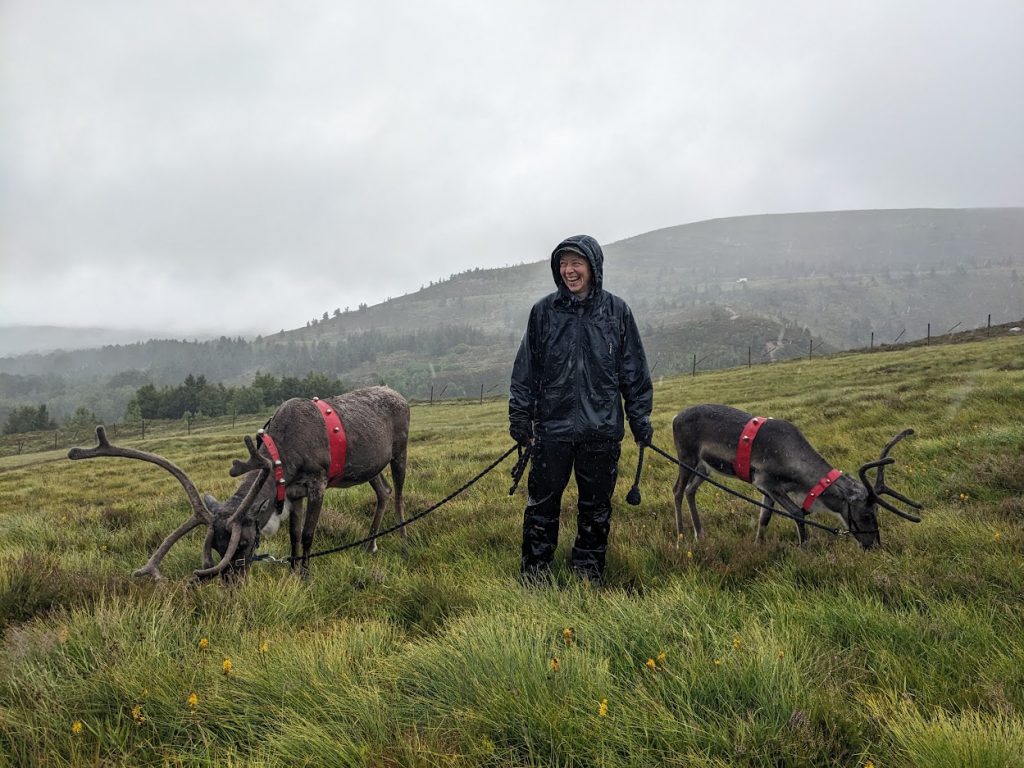
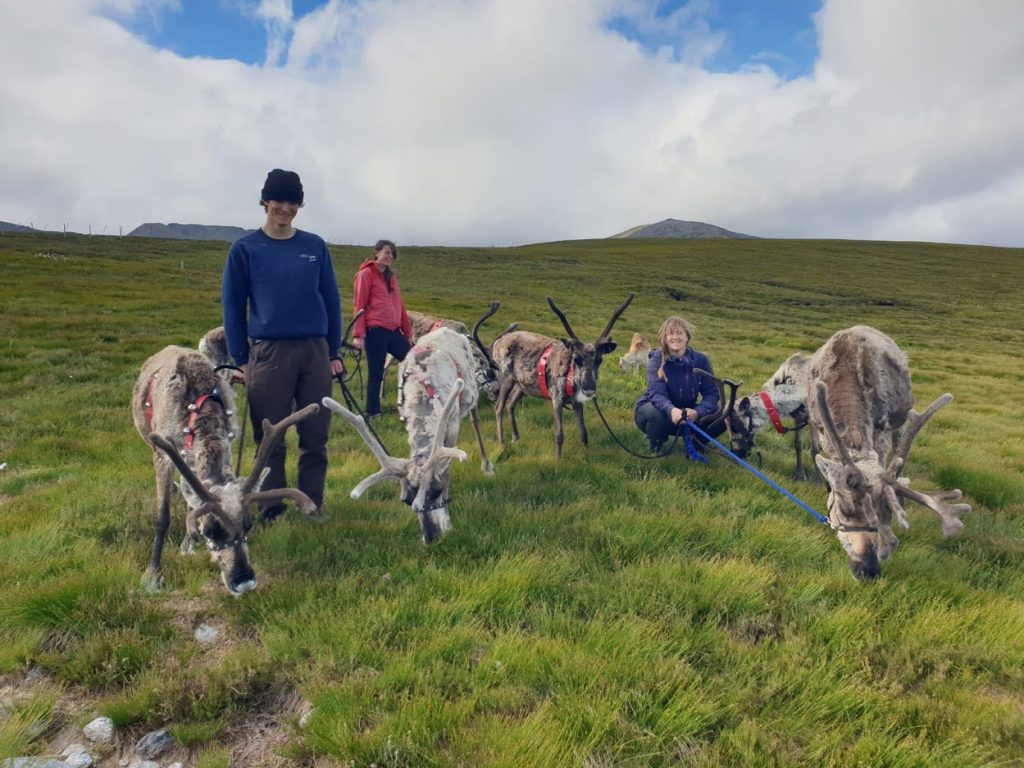
Once we put some harness on we walk them out into another enclosure to get used to it. Our two hand reared calves Winnie and Alba sometime join us for this little excursion each morning so they can get a bit of extra hill grazing. Being the size of a medium dog sometimes the young trainee reindeer forget that the calves are actually reindeer and decide to unnecessarily have a brief panic, before realising how silly they are worrying about a little reindeer calf… or two. It’s quite funny watching them work it out. The old boys are pretty savvy to the calves and just ignore them.
Working closely and being able to handle our reindeer is really important for them and us. As many of you know we run a Christmas tour through November and December so any extra handling prepares our reindeer for some of that work they do. We also handle our reindeer should they need any treatment, vaccines or antibiotics and the more used to this they are the less stressful the situation for both animal and human. Some take to it quicker than others, like us they all have their individual personalities and characters. We change our handling sometimes depending which reindeer it is you’re working with. It’s really important we know our reindeer so if there is one ‘off colour’ then it’s picked up quickly and dealt with.
Here are some photos of us training our reindeer in the summer and also in the autumn time when we are getting ready for our Christmas tour.
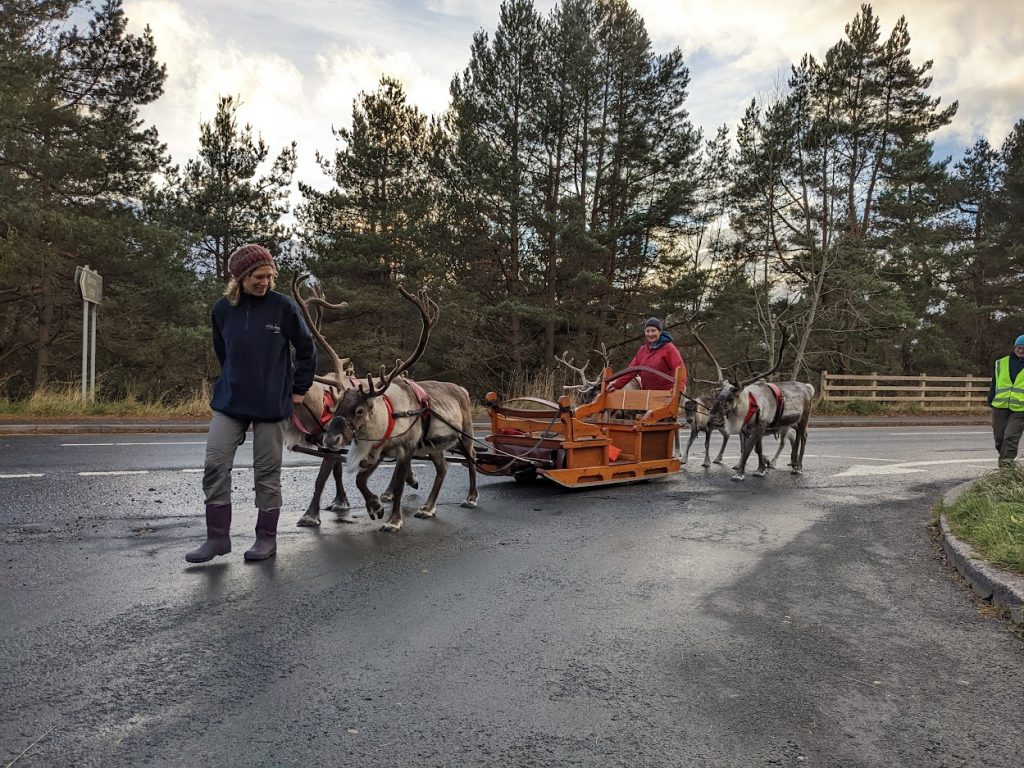
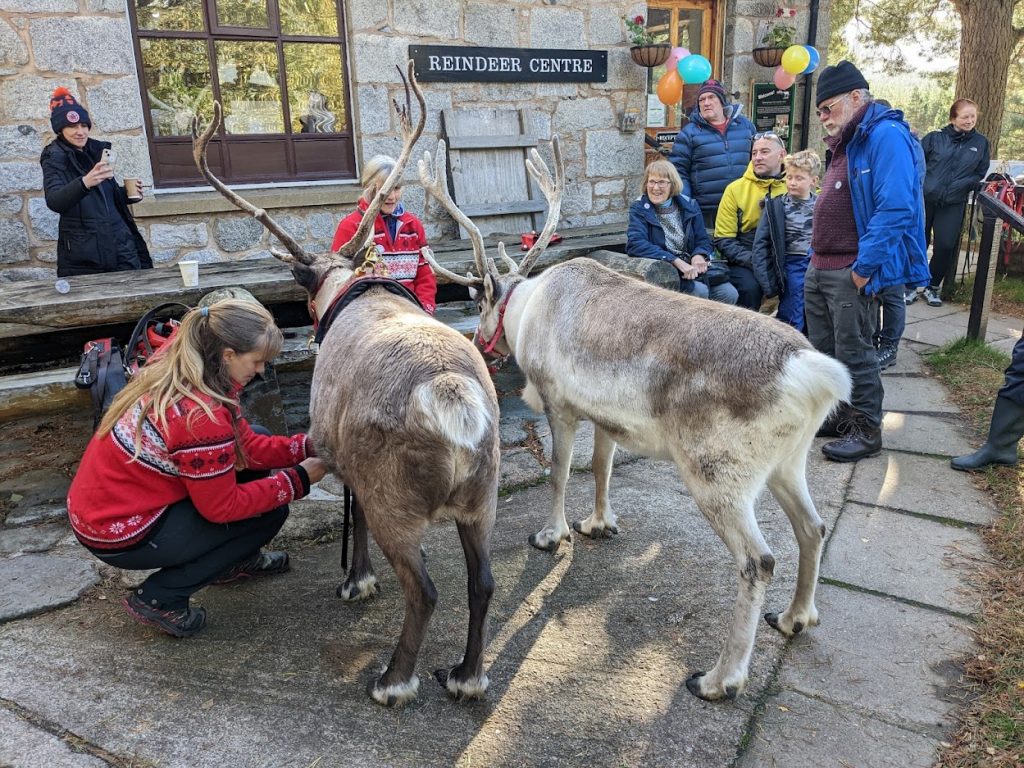
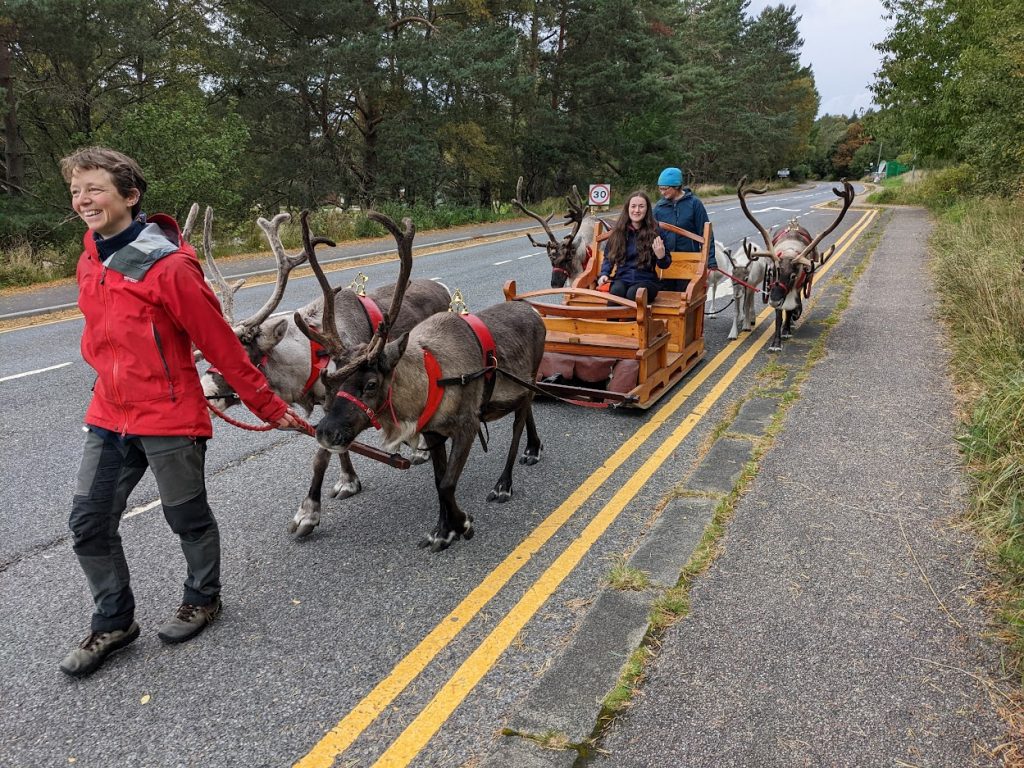
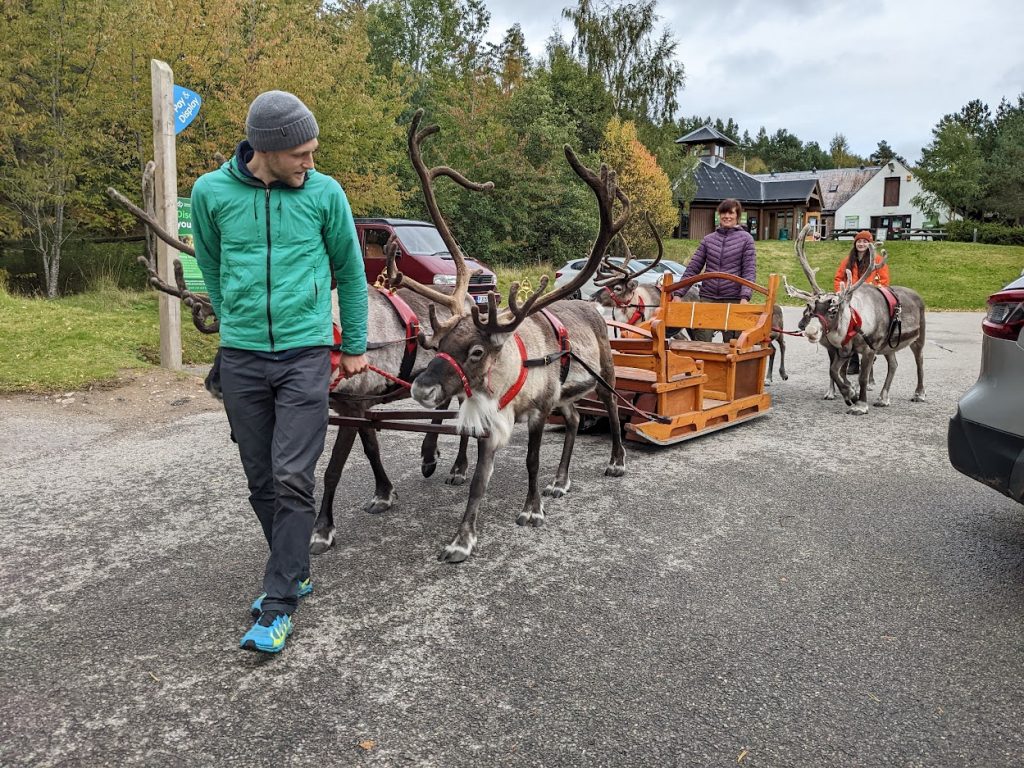
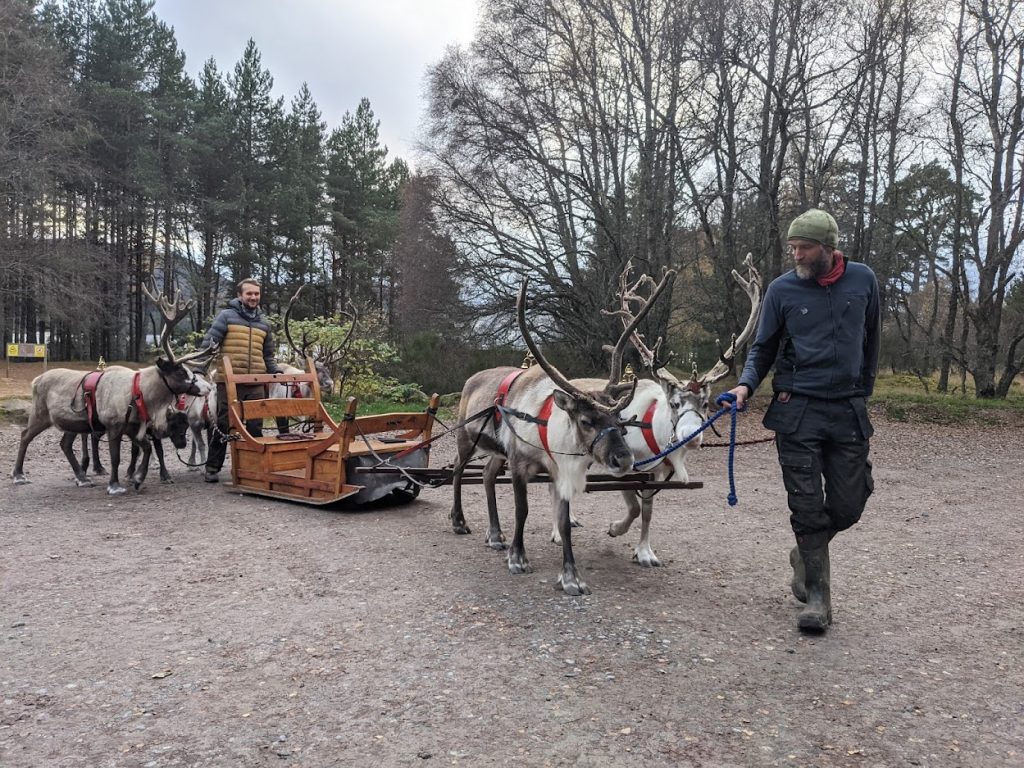
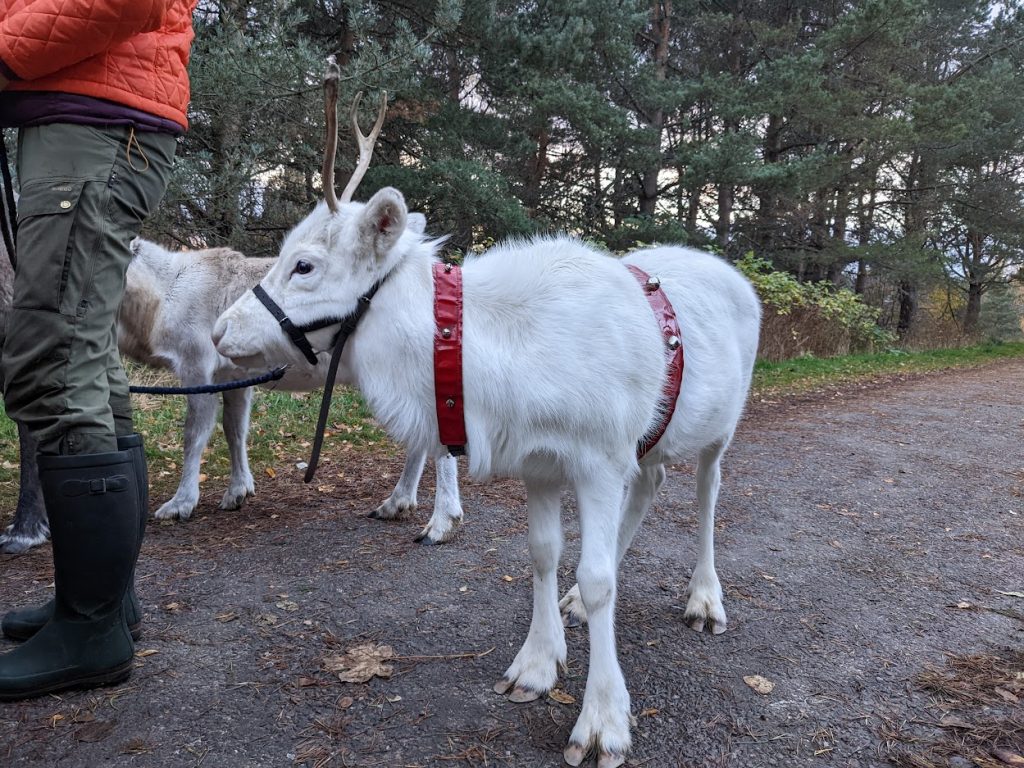
Fiona


